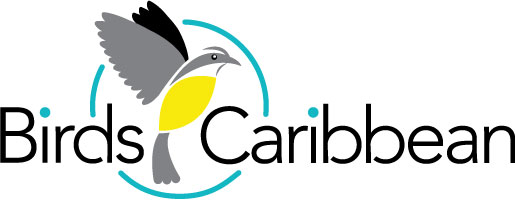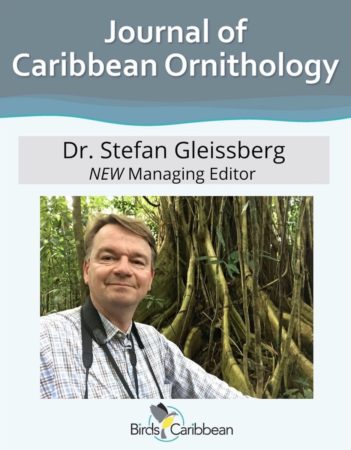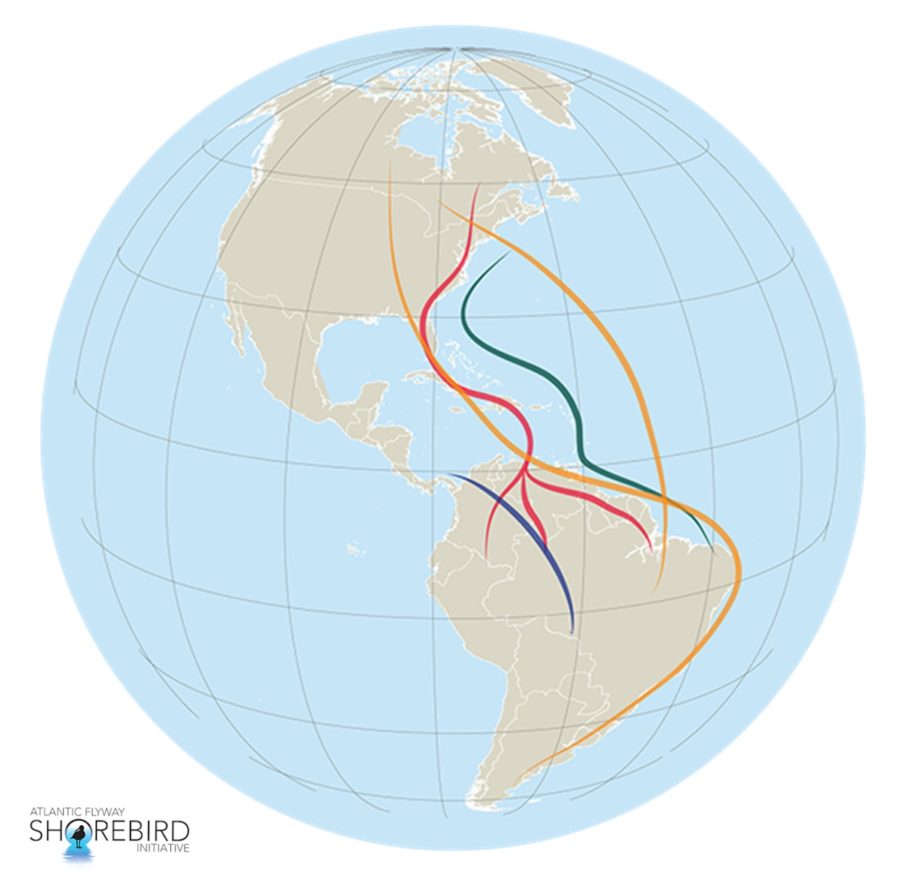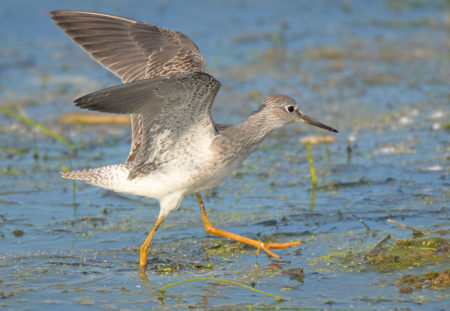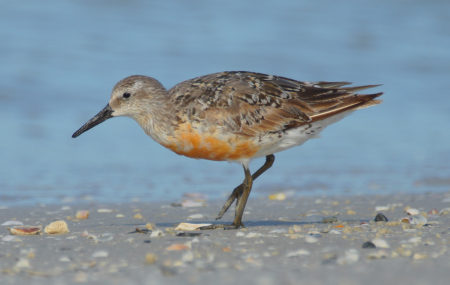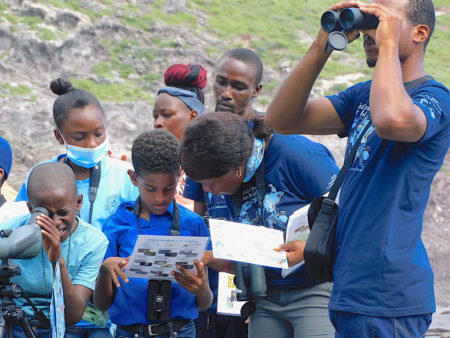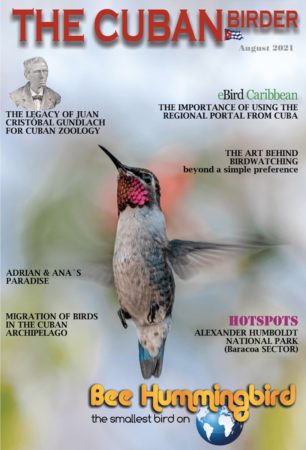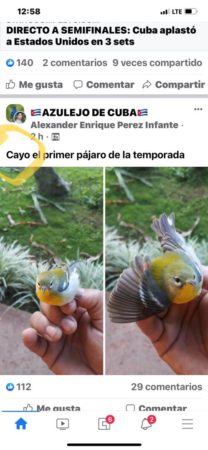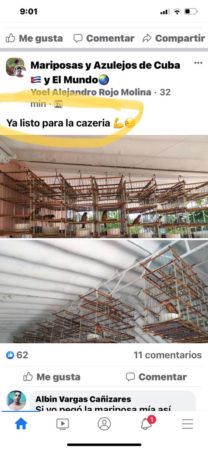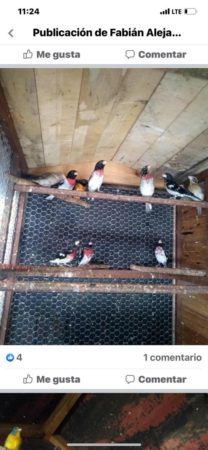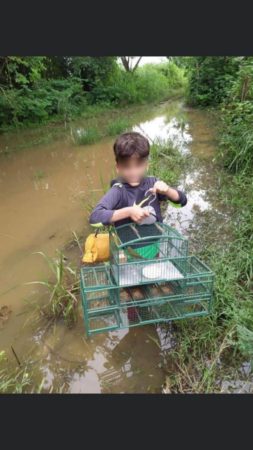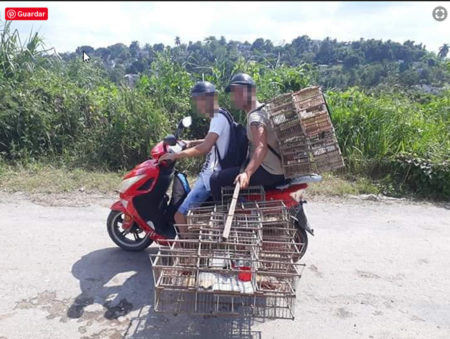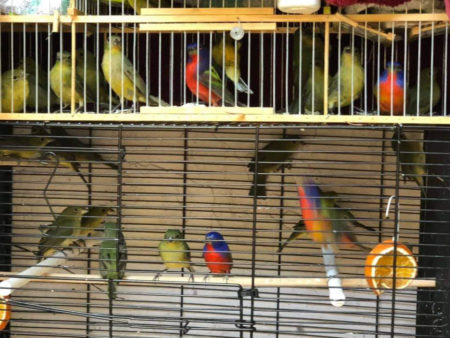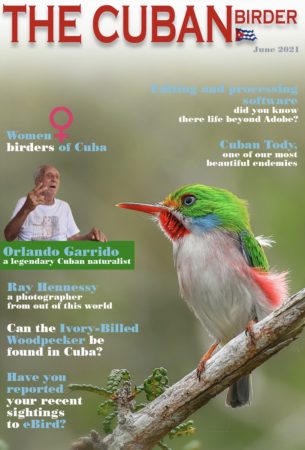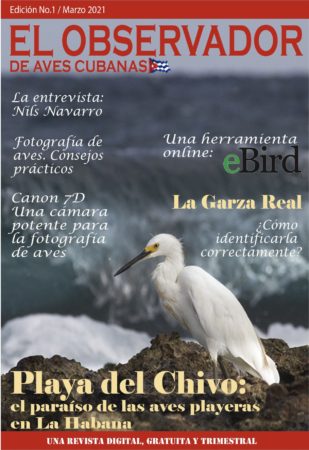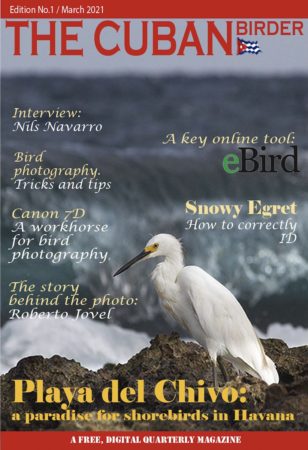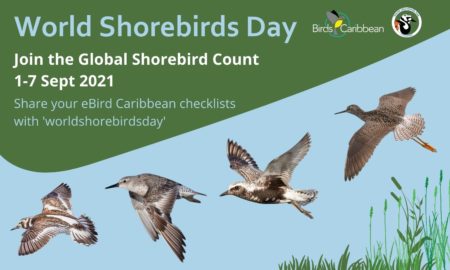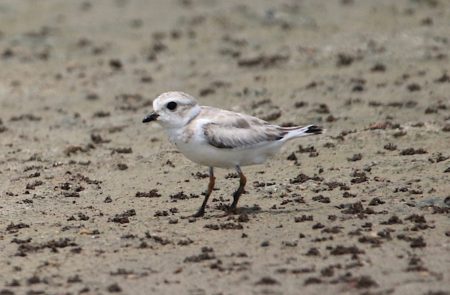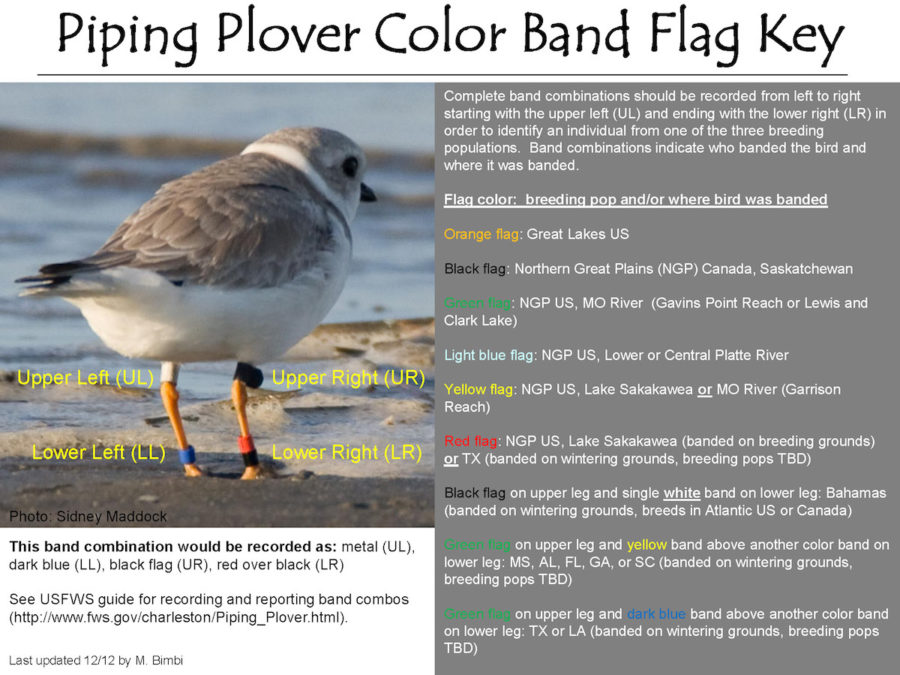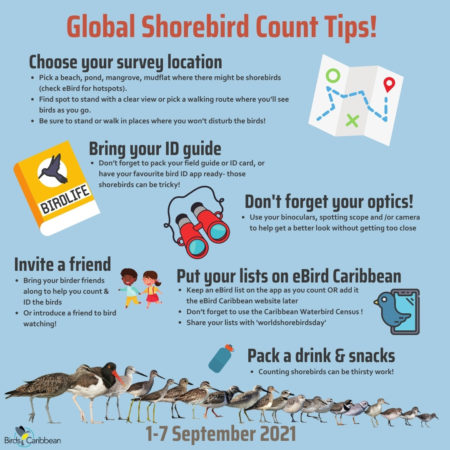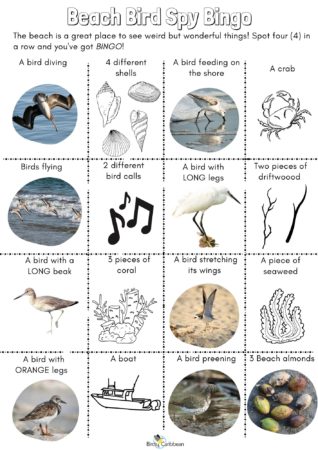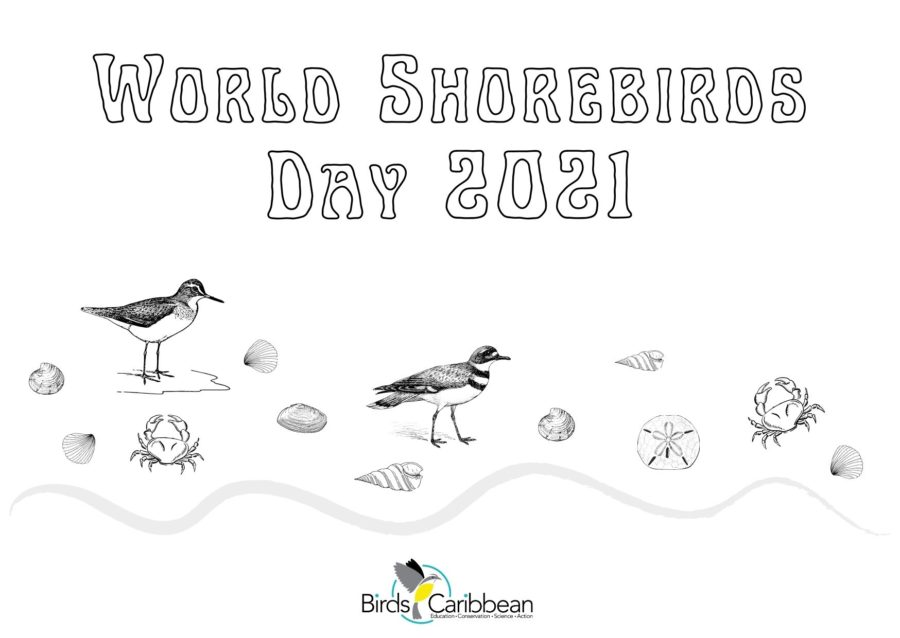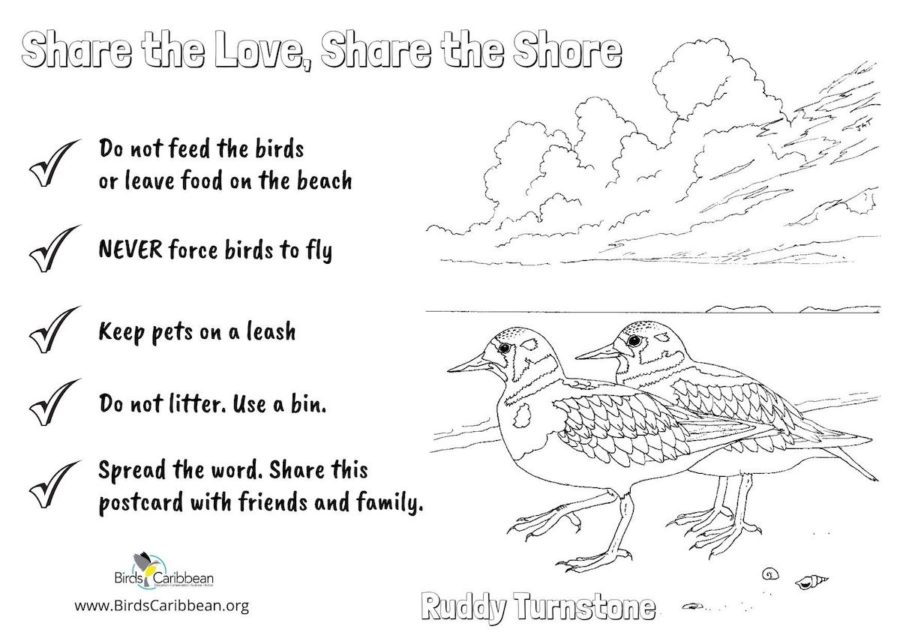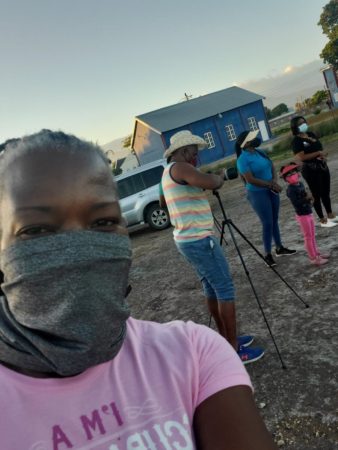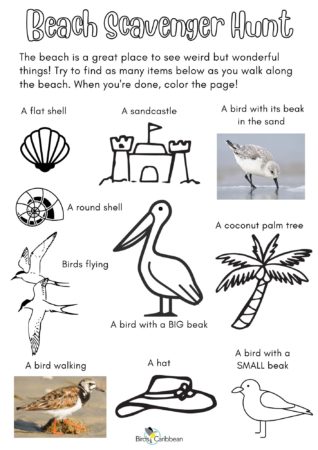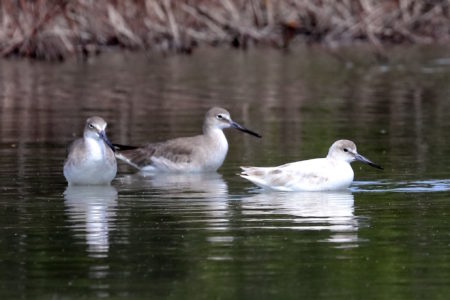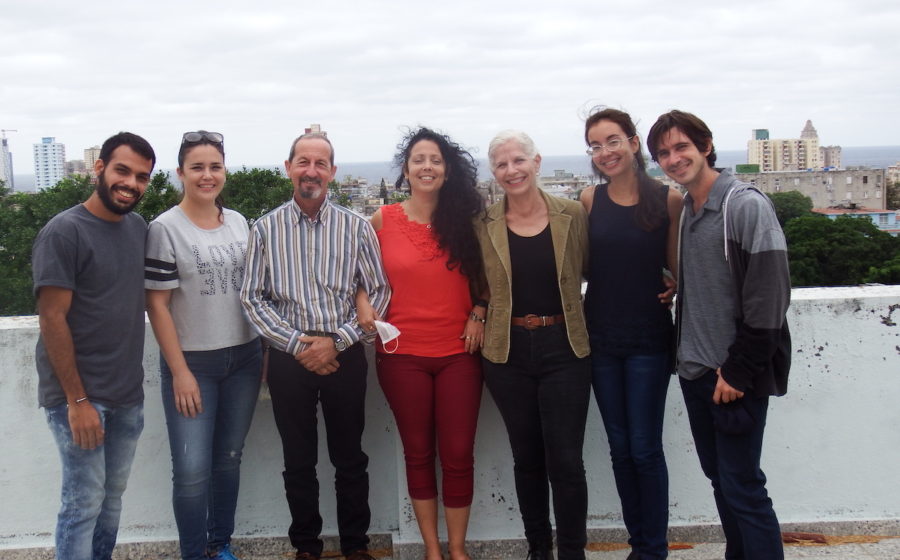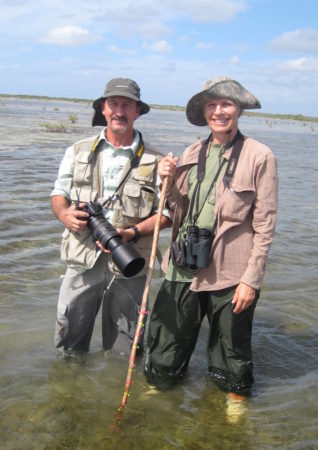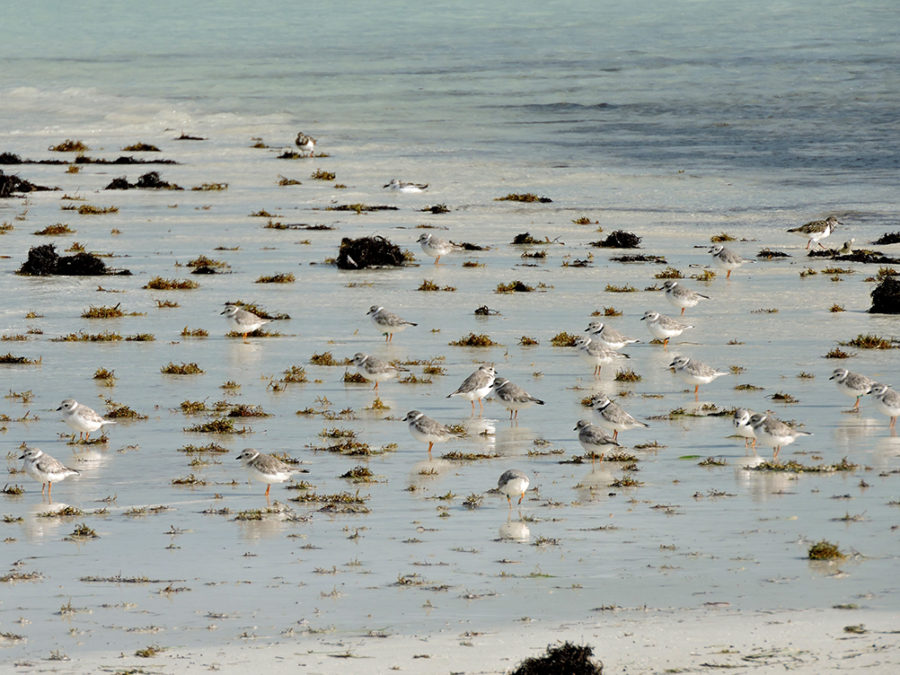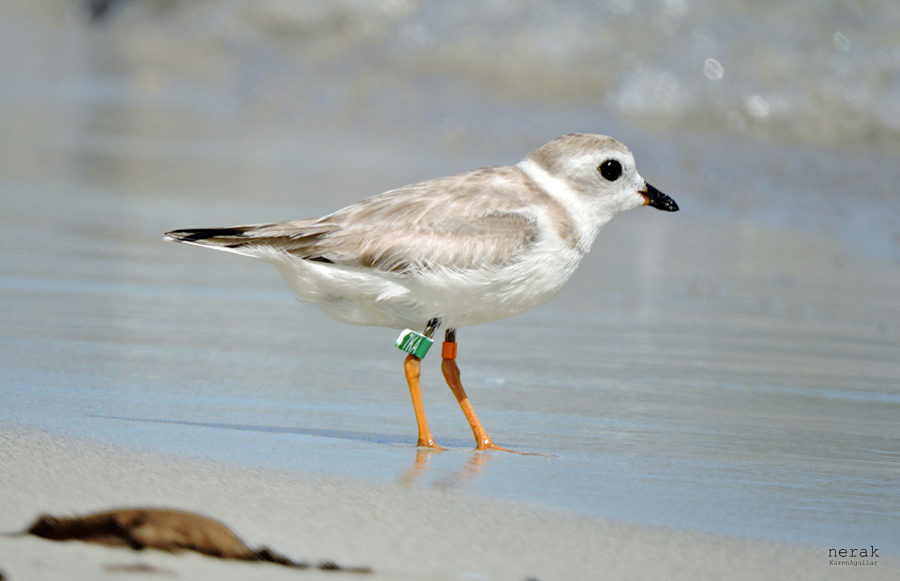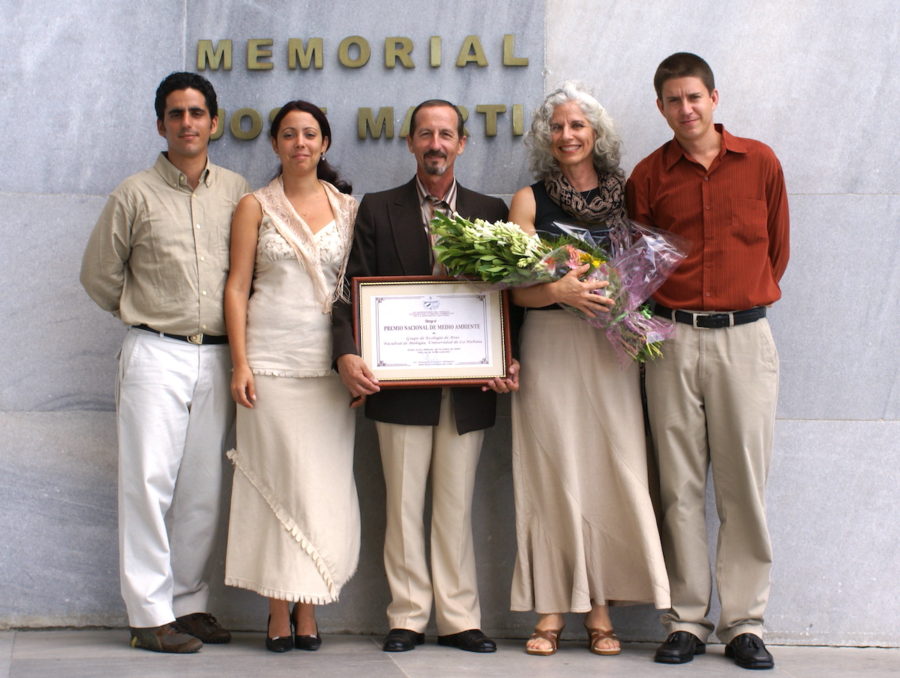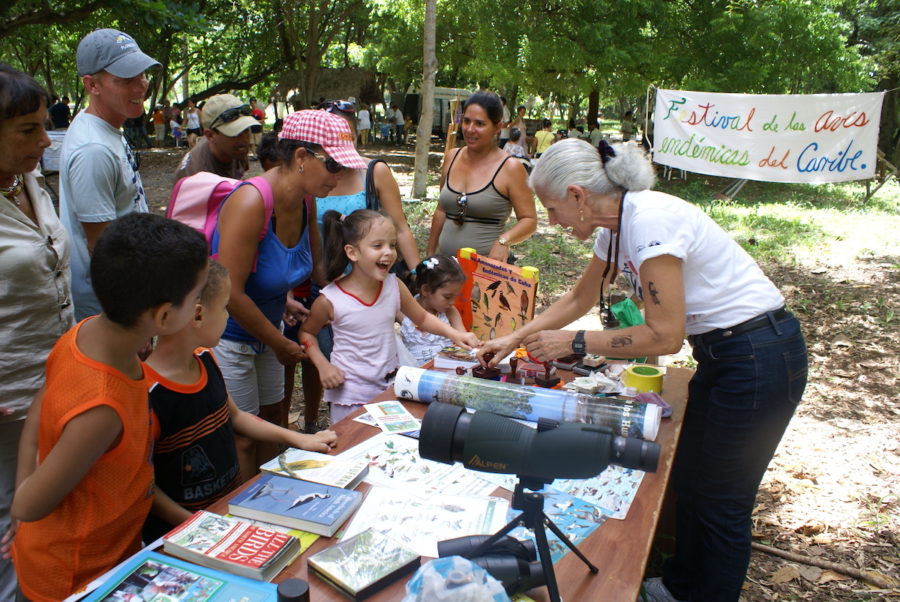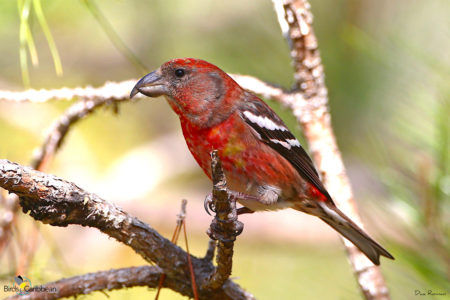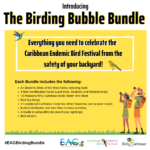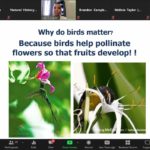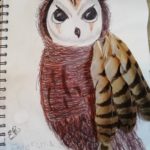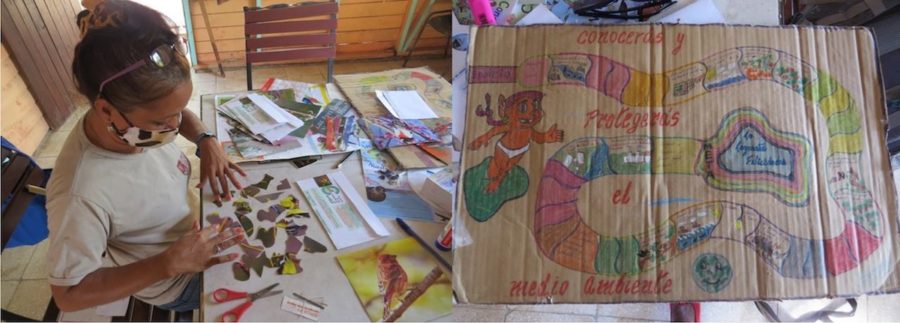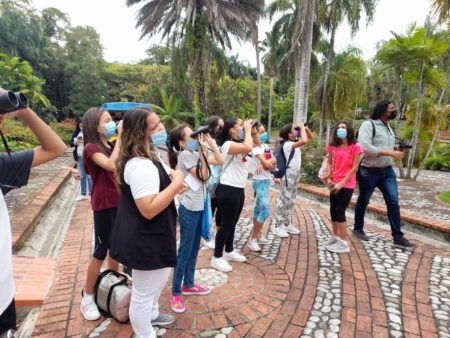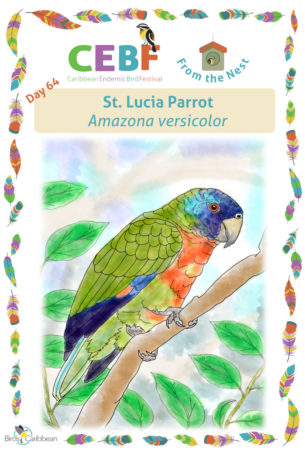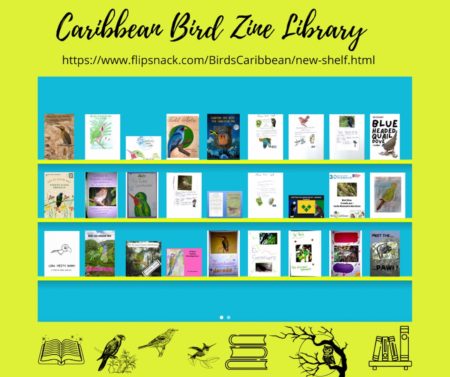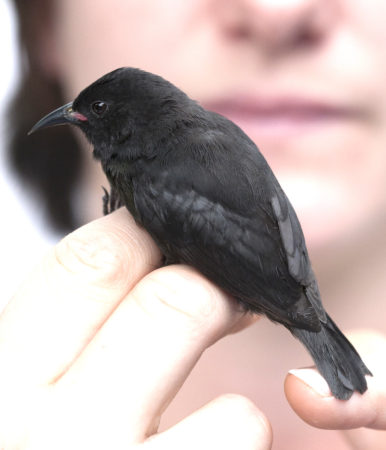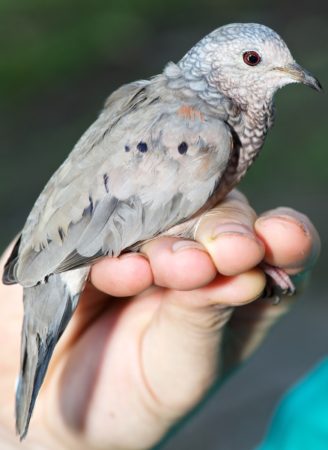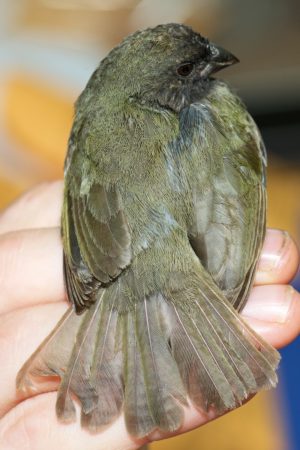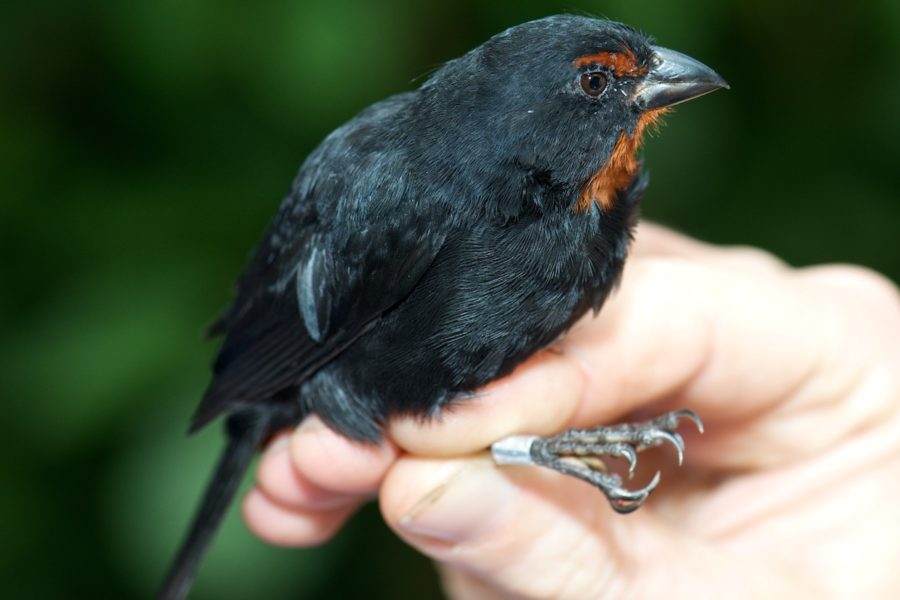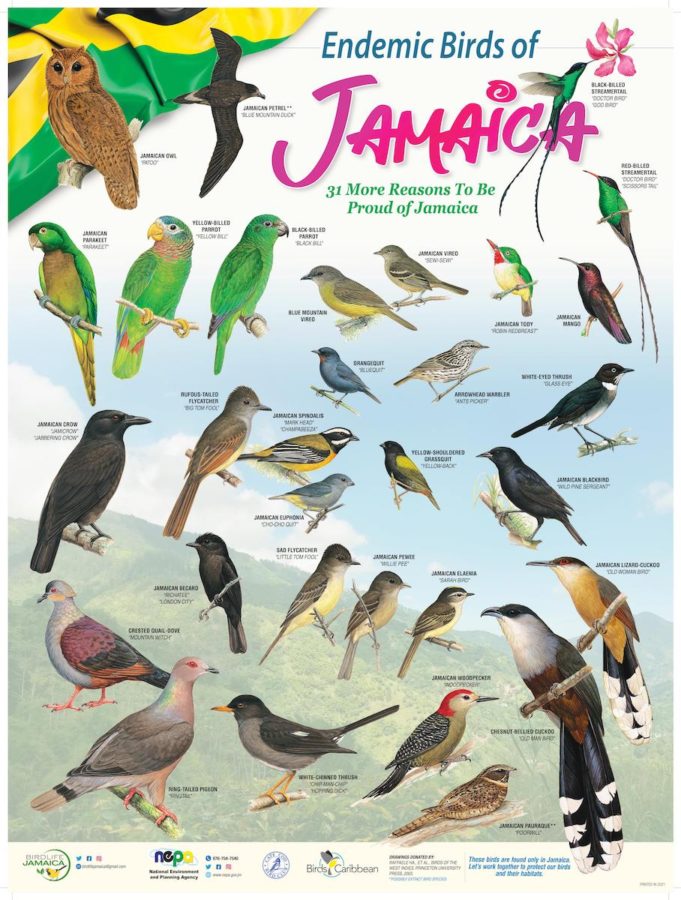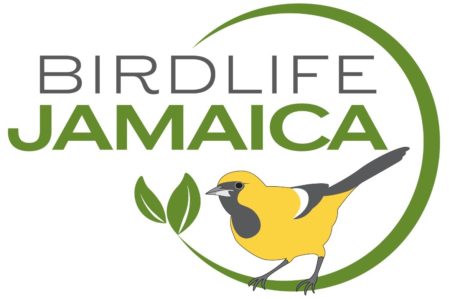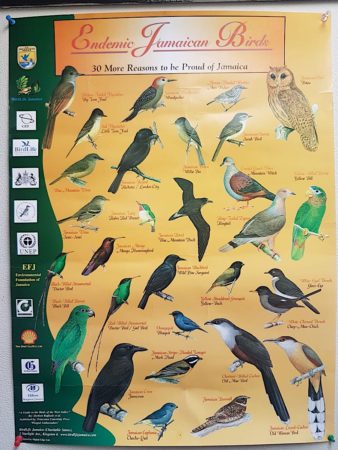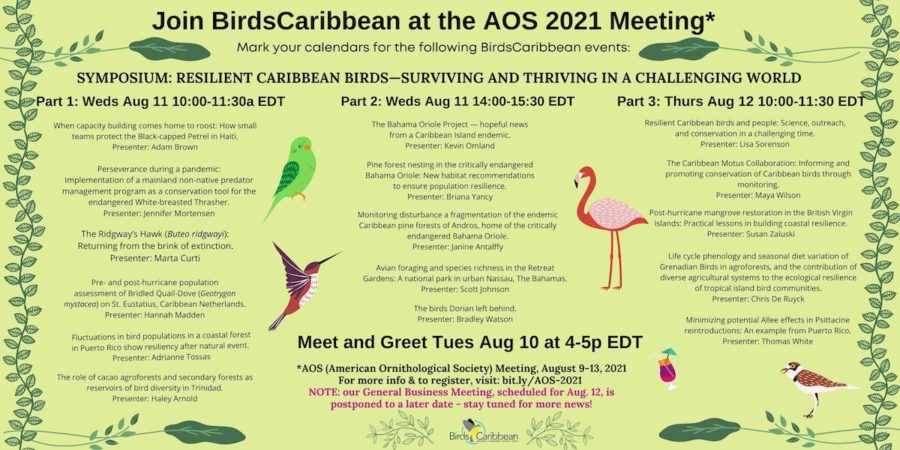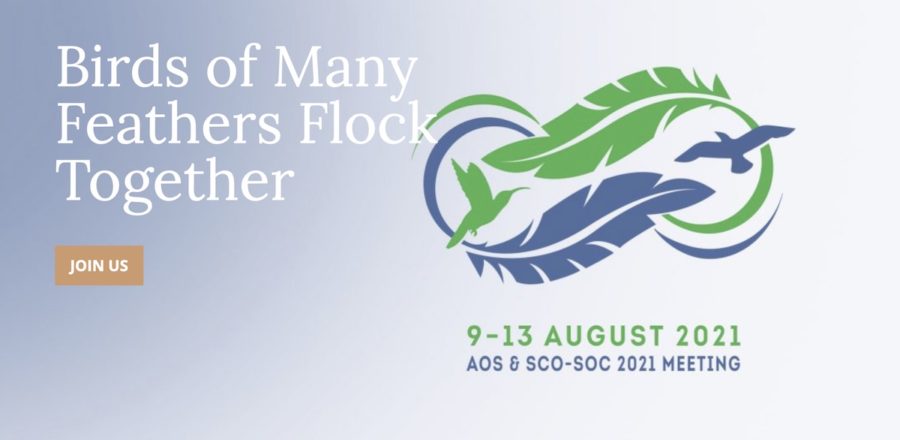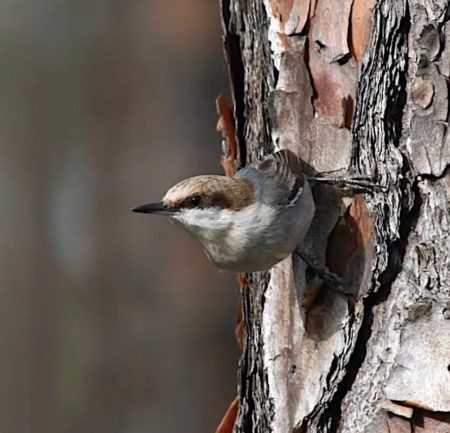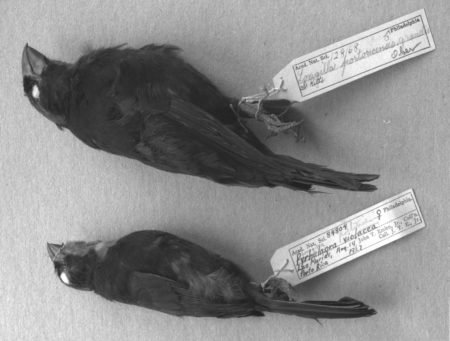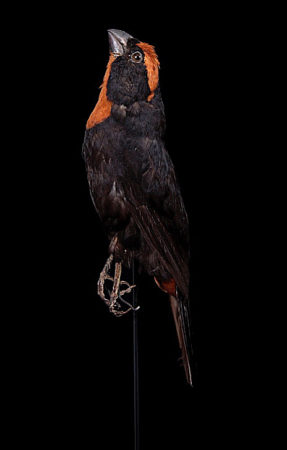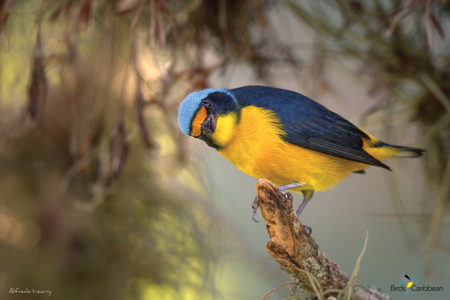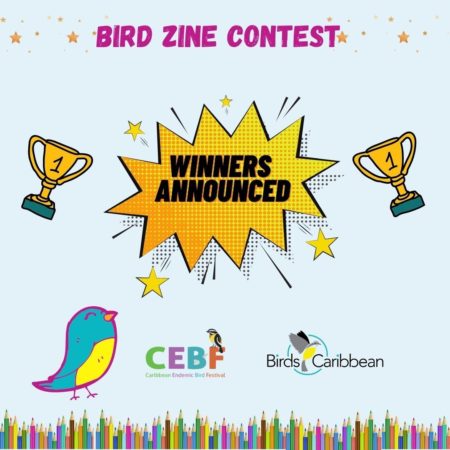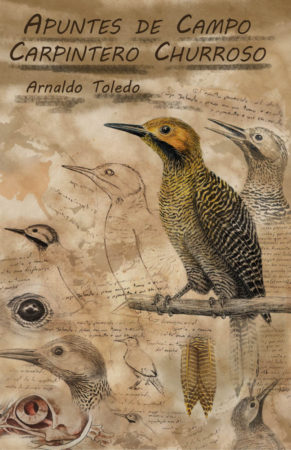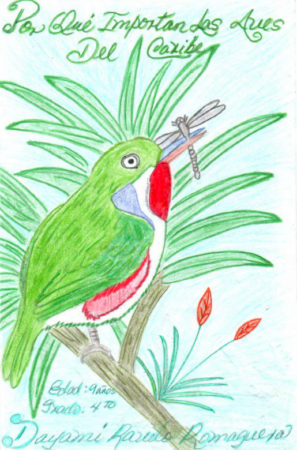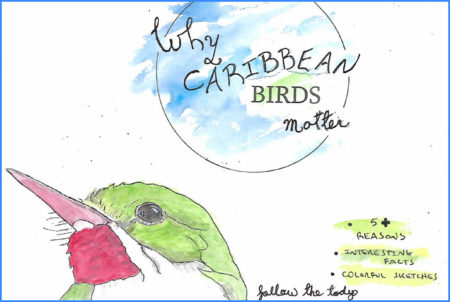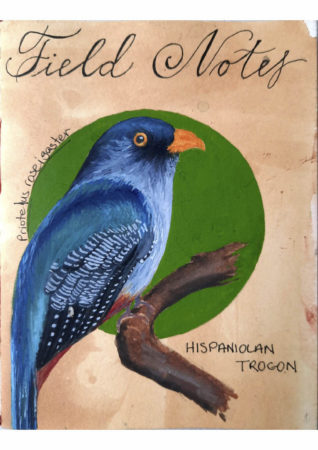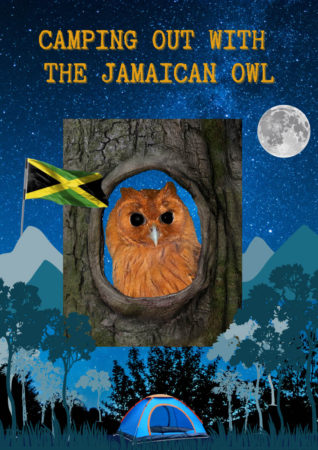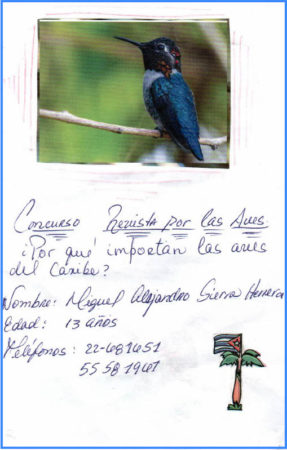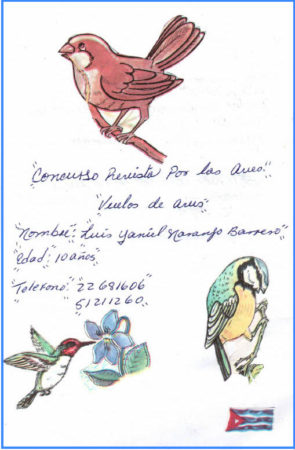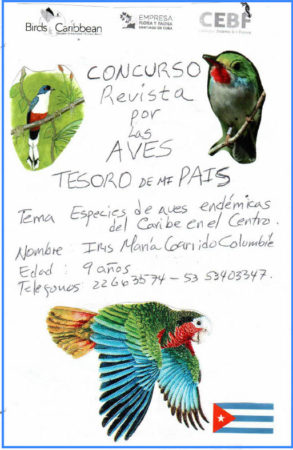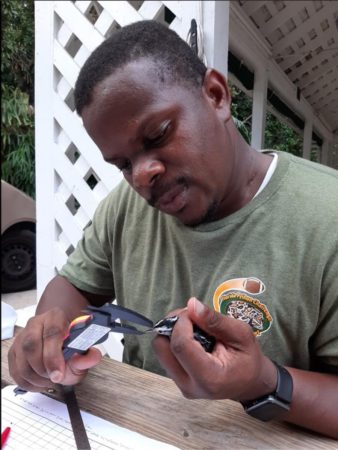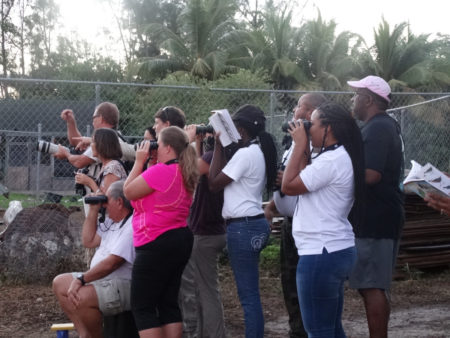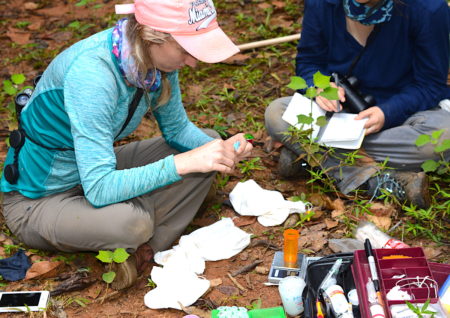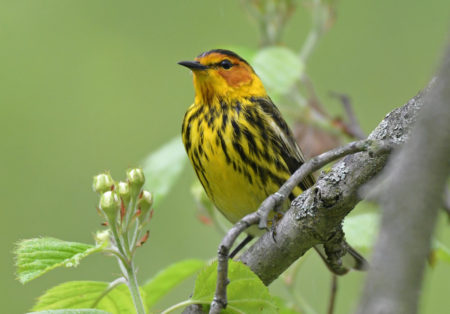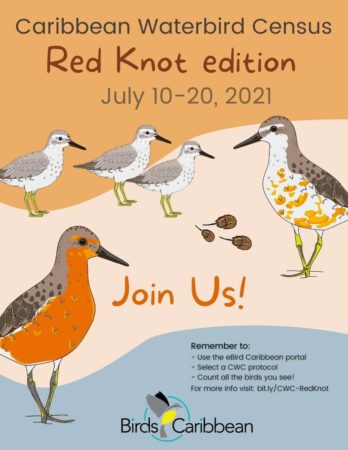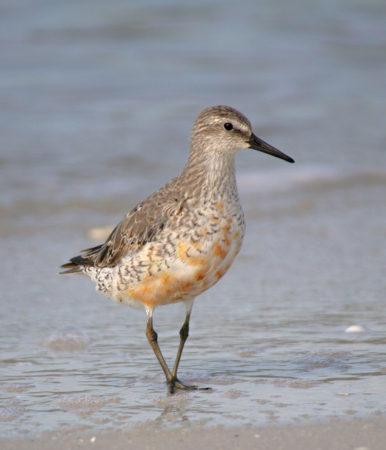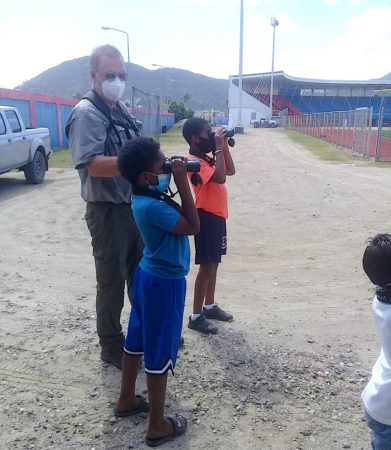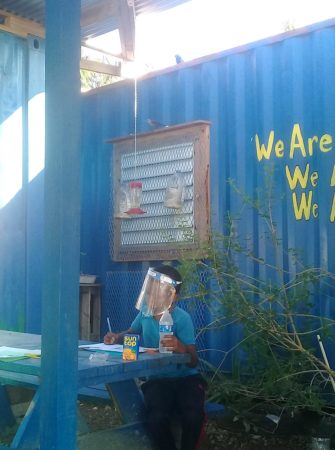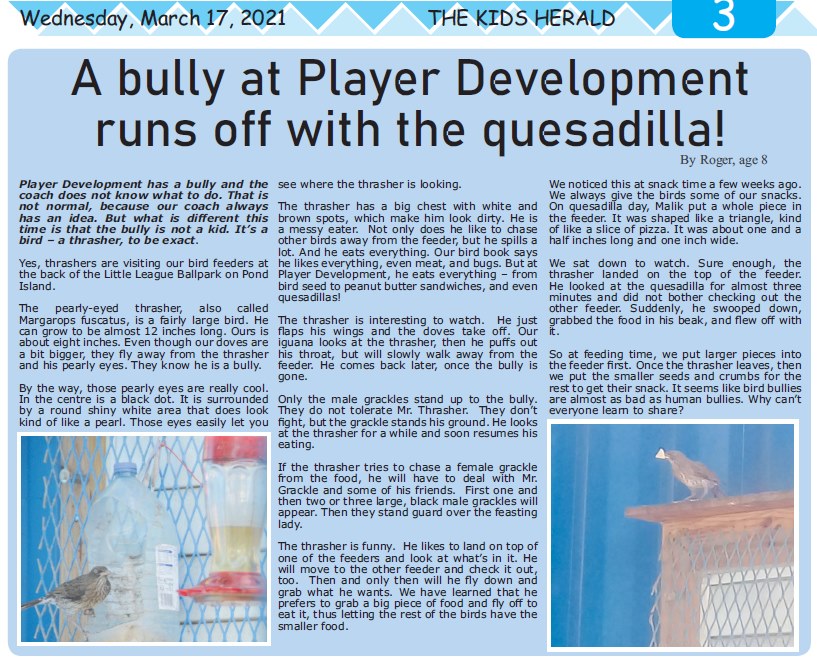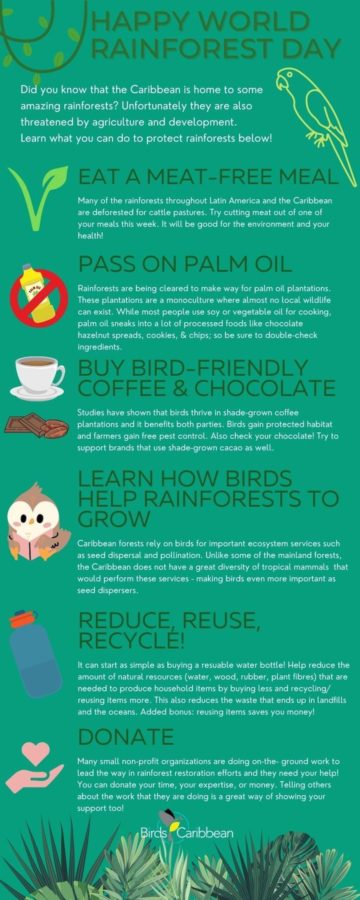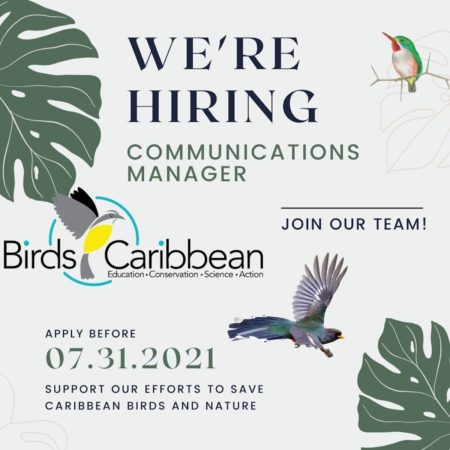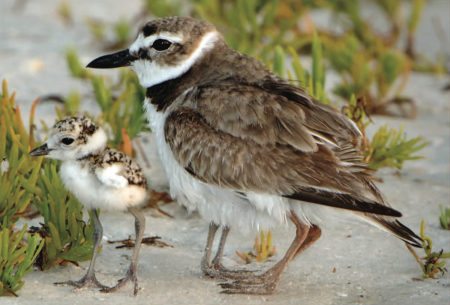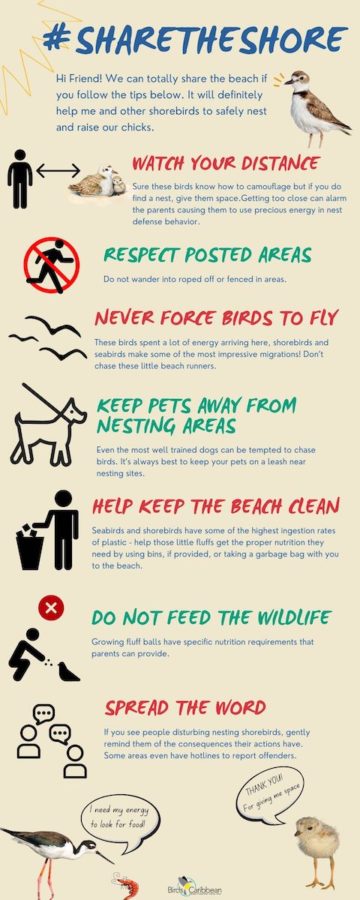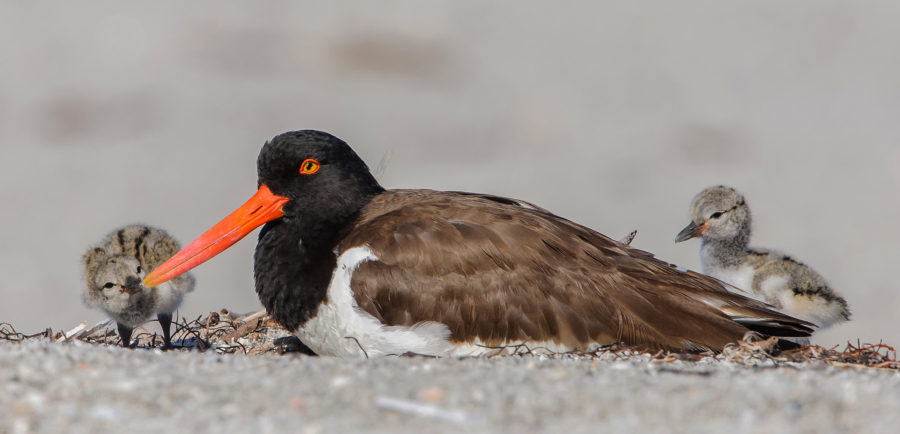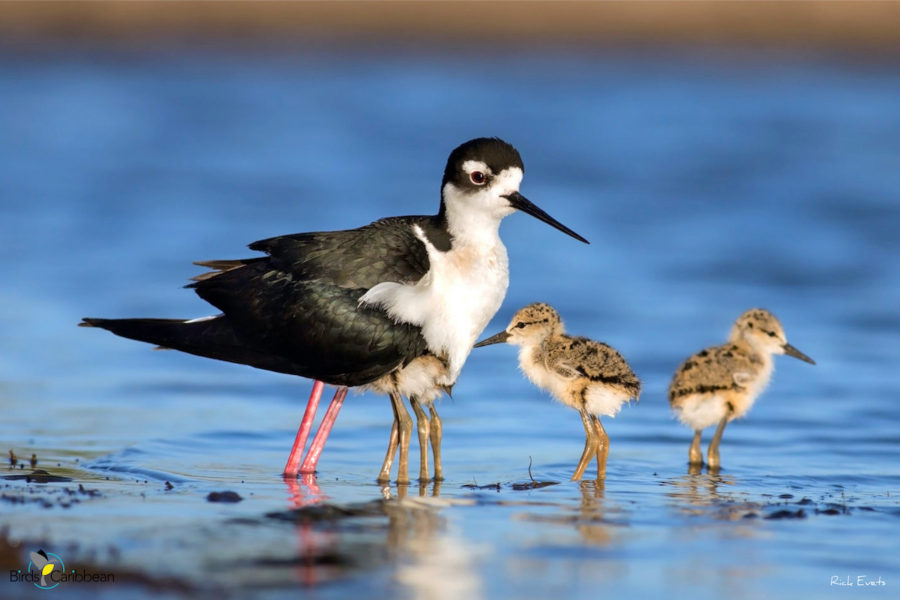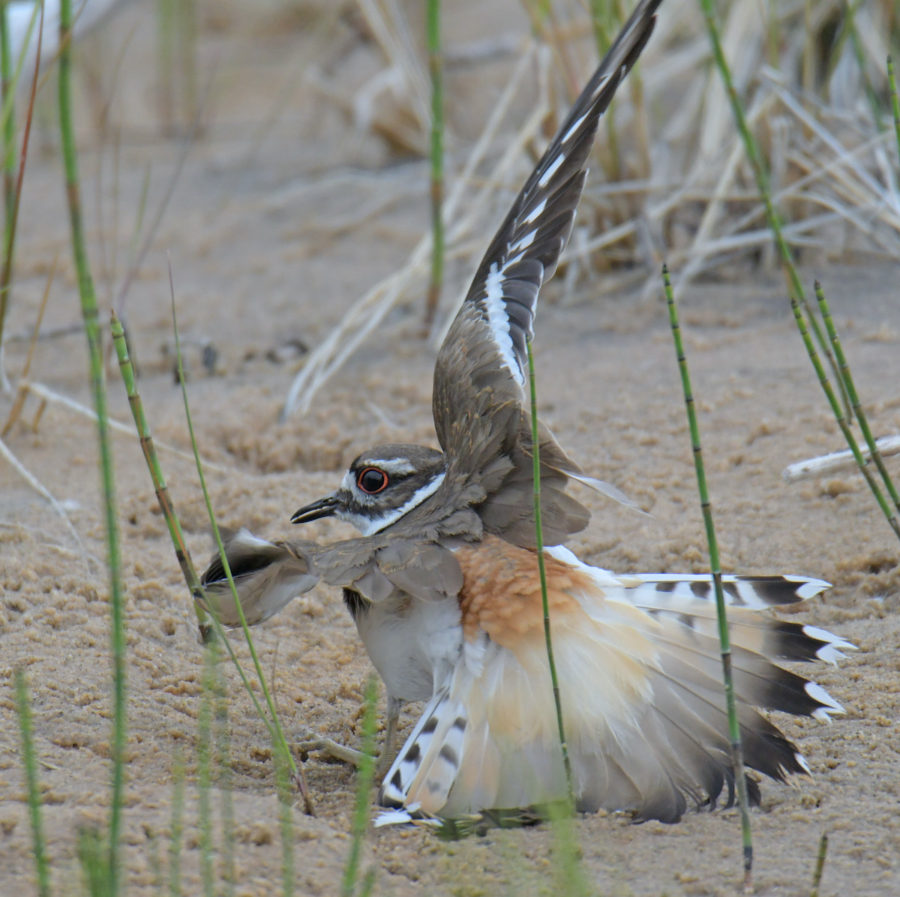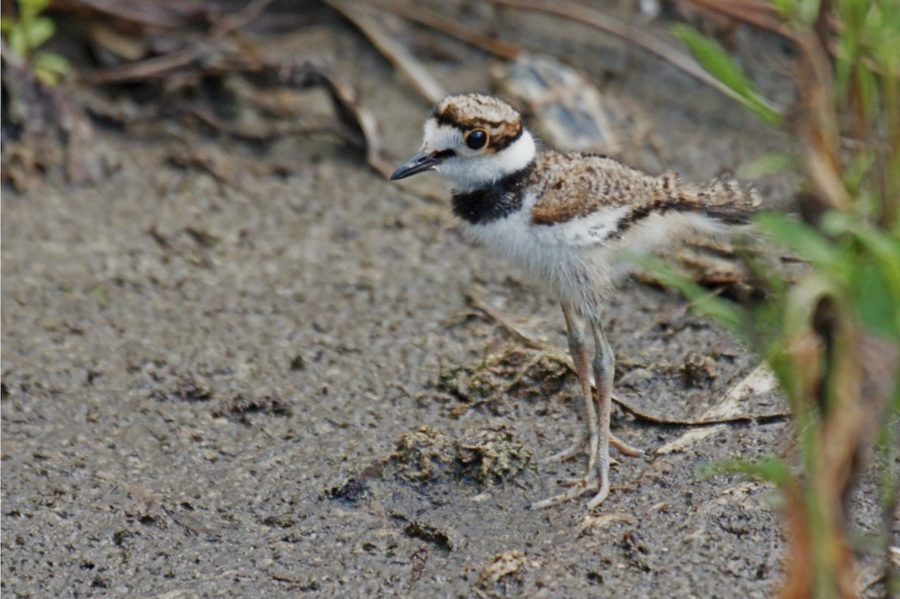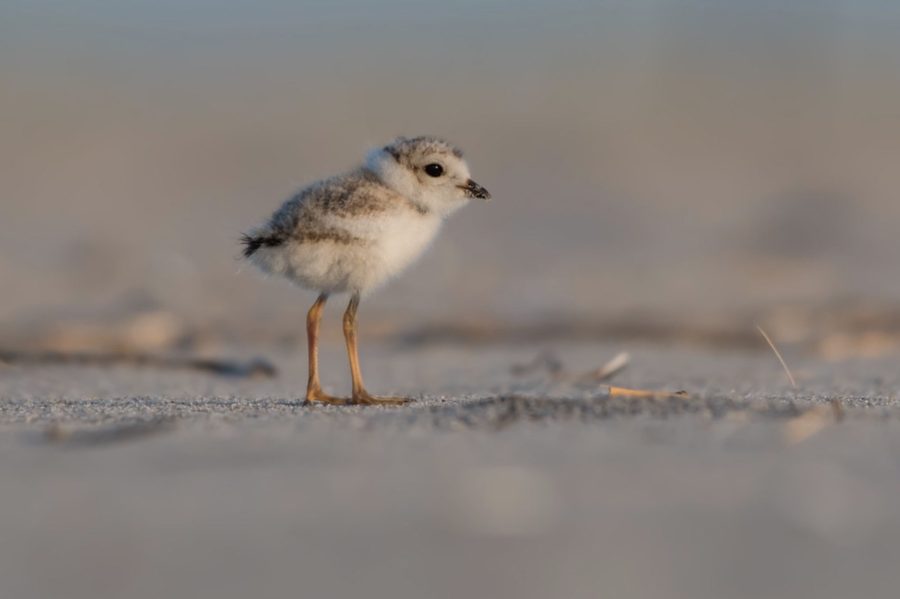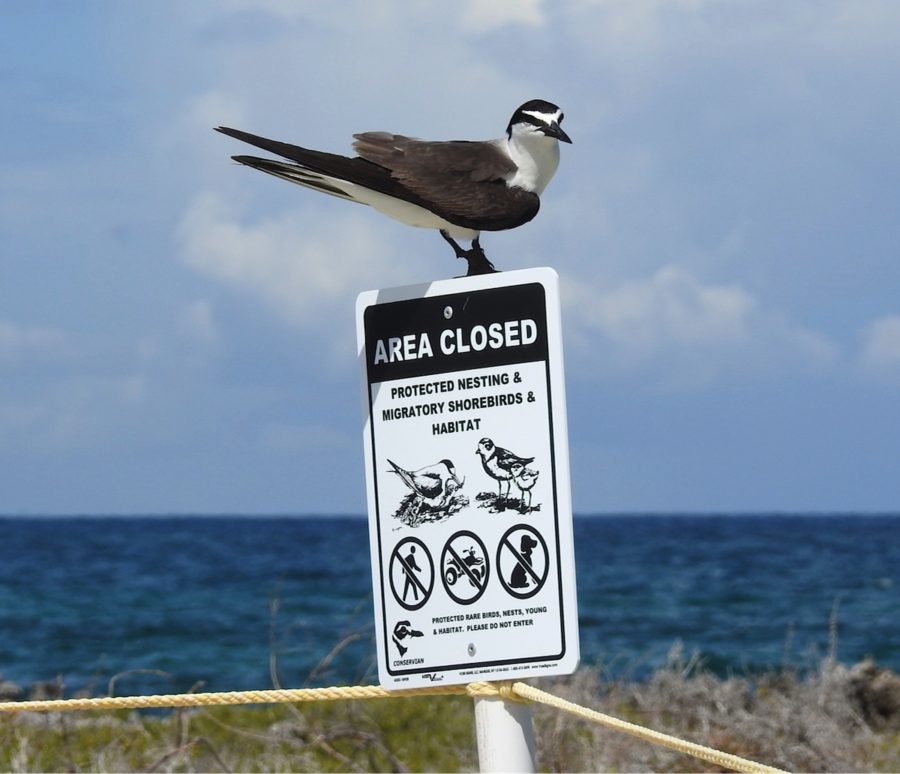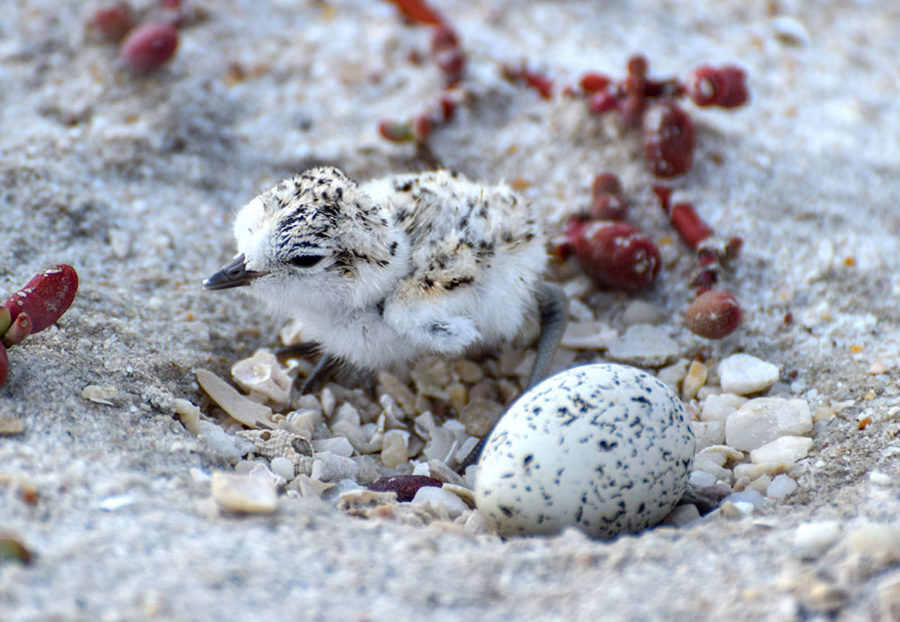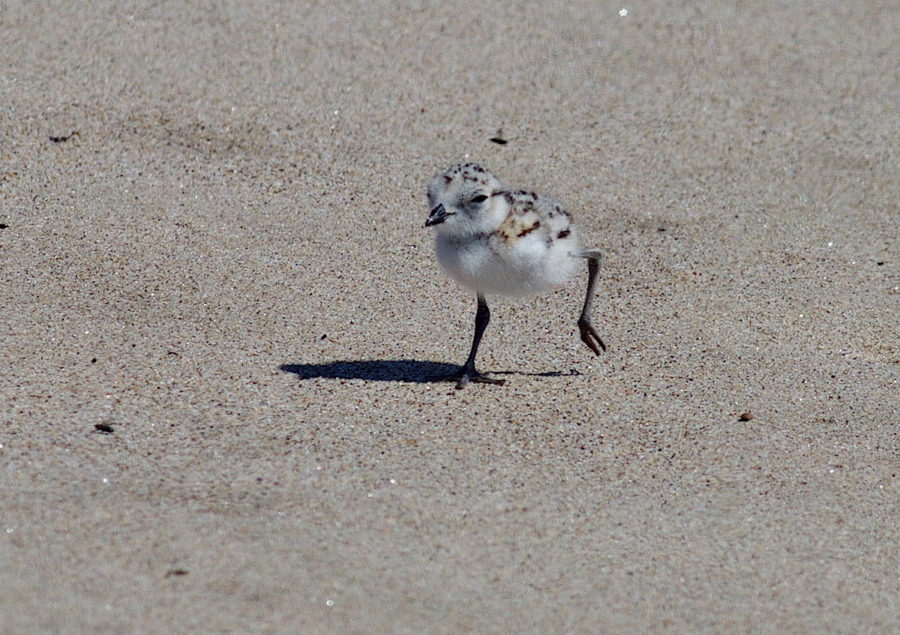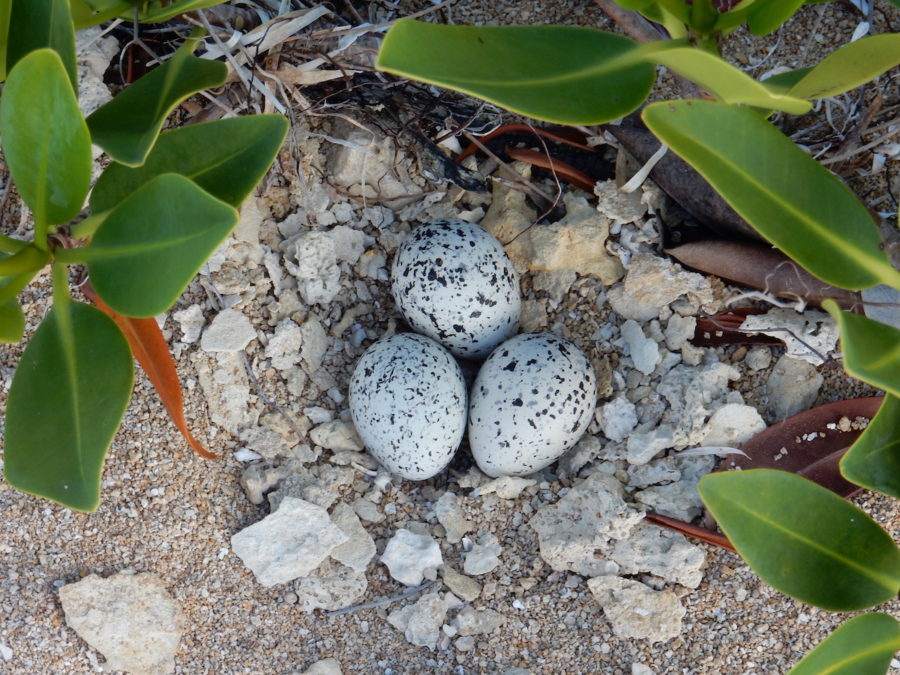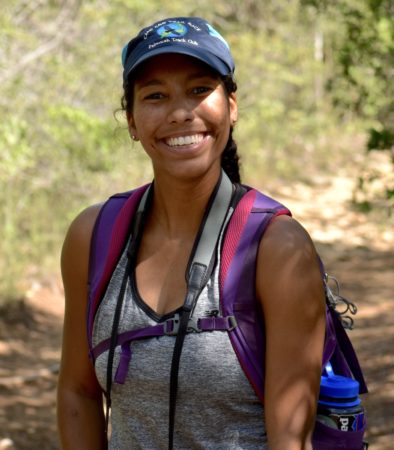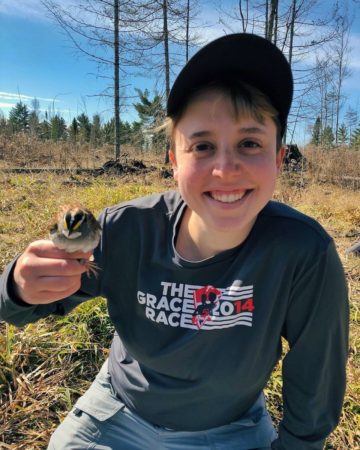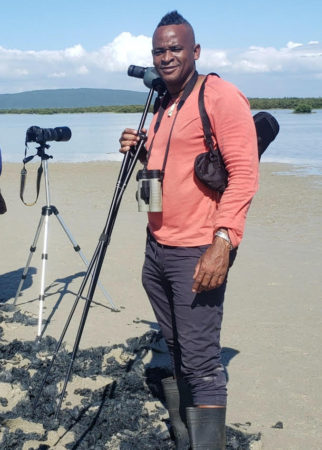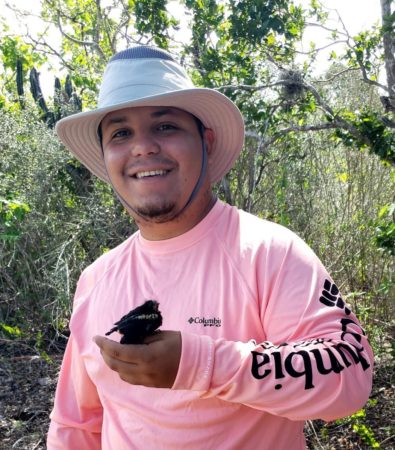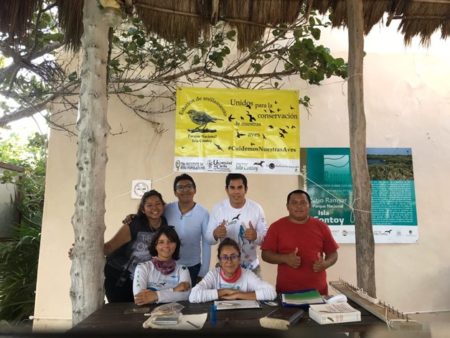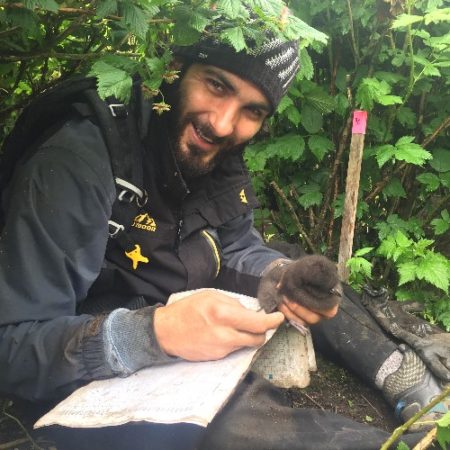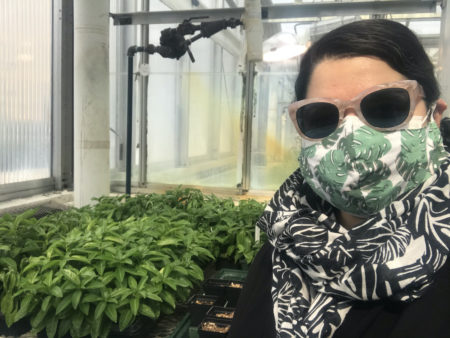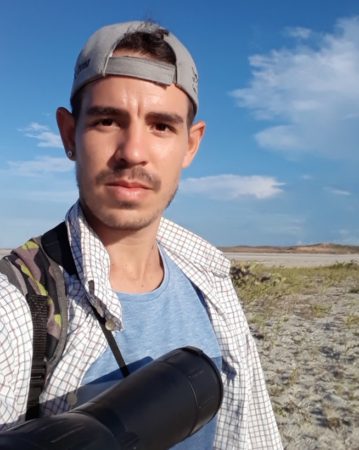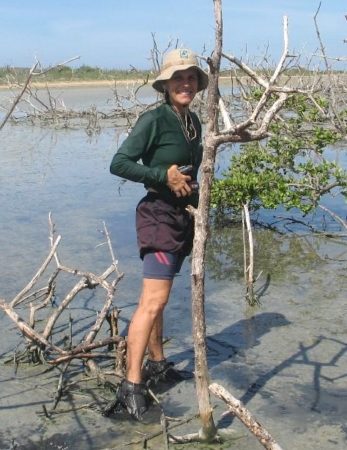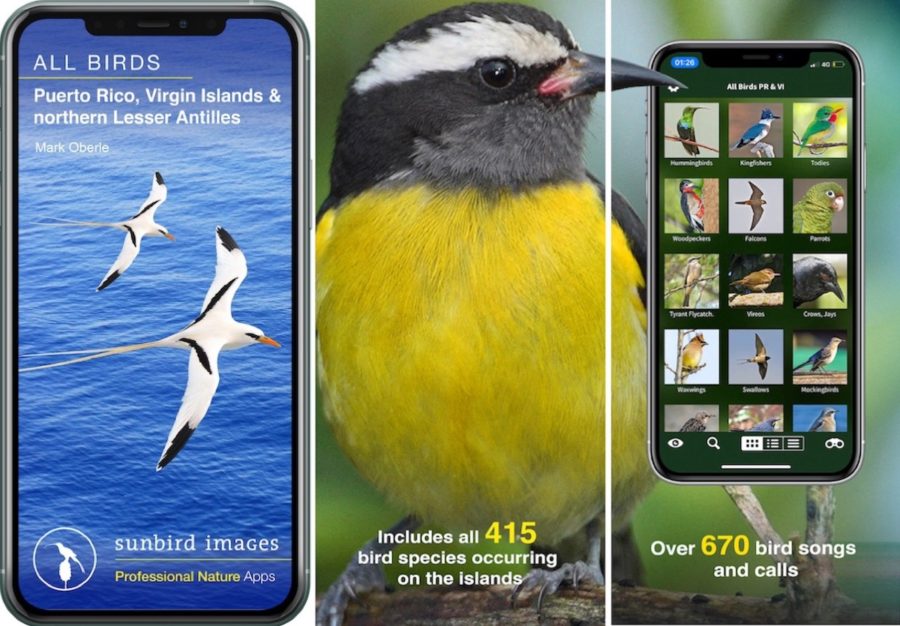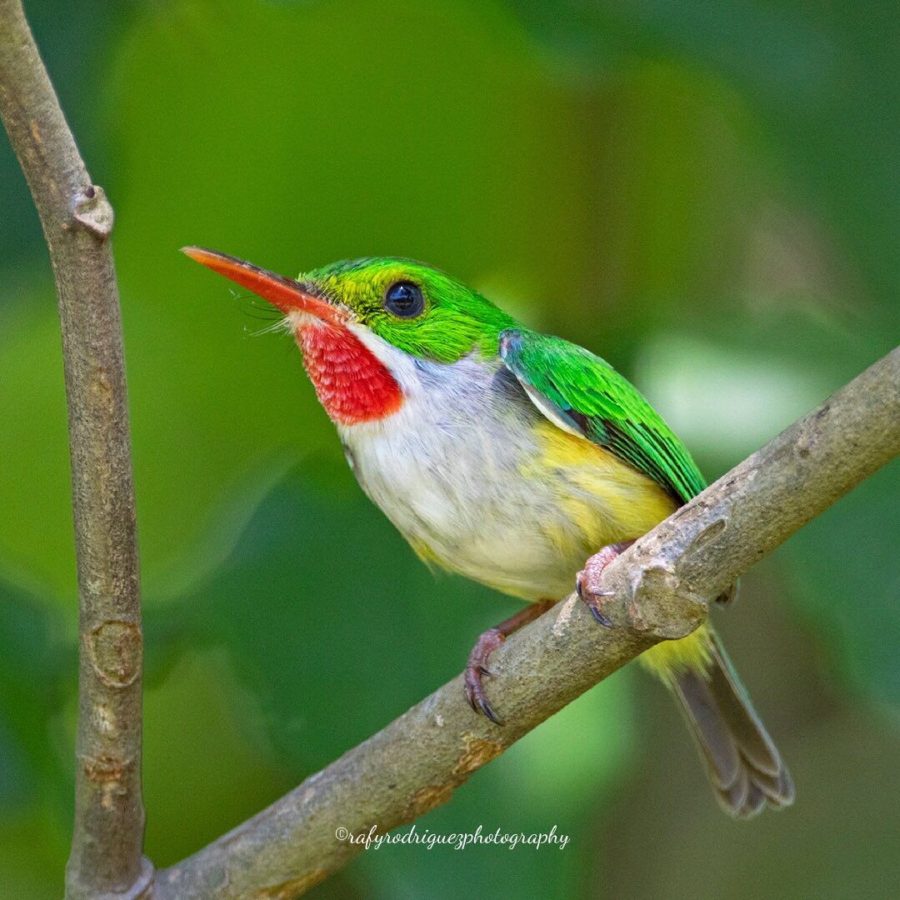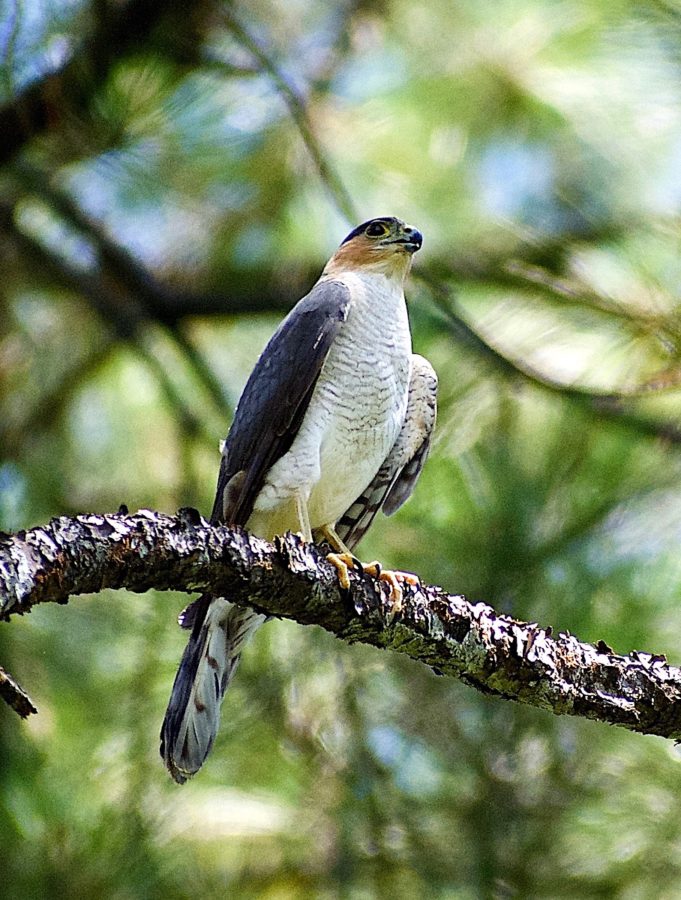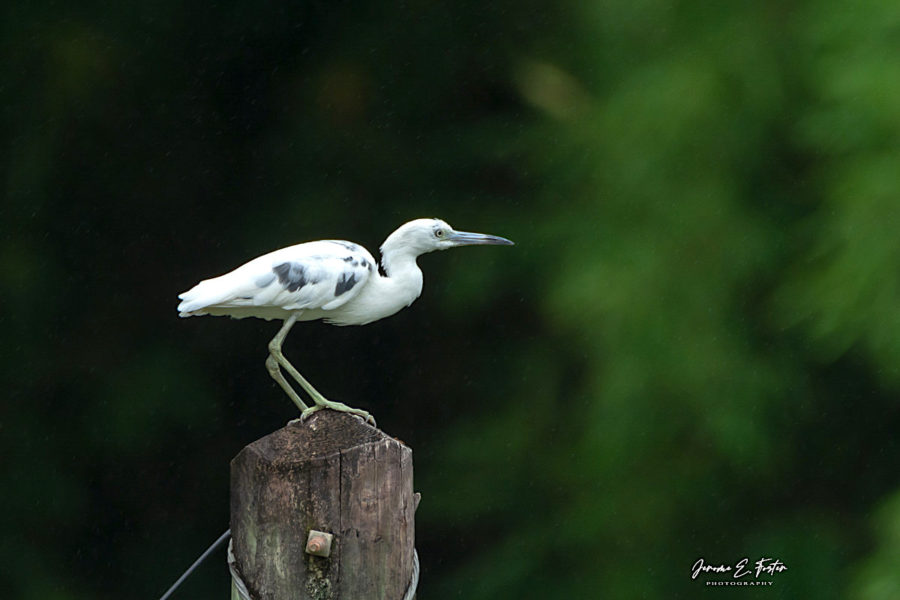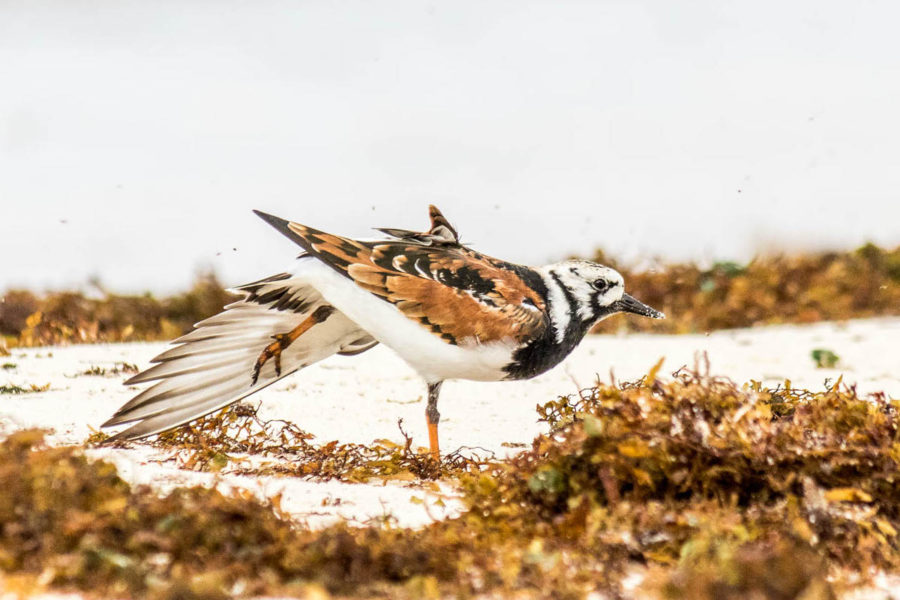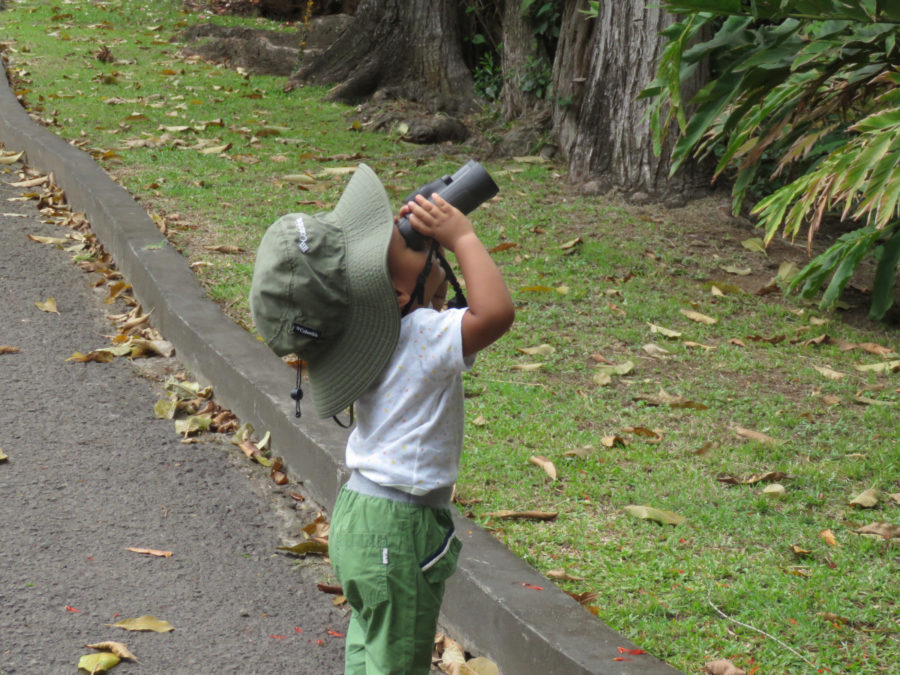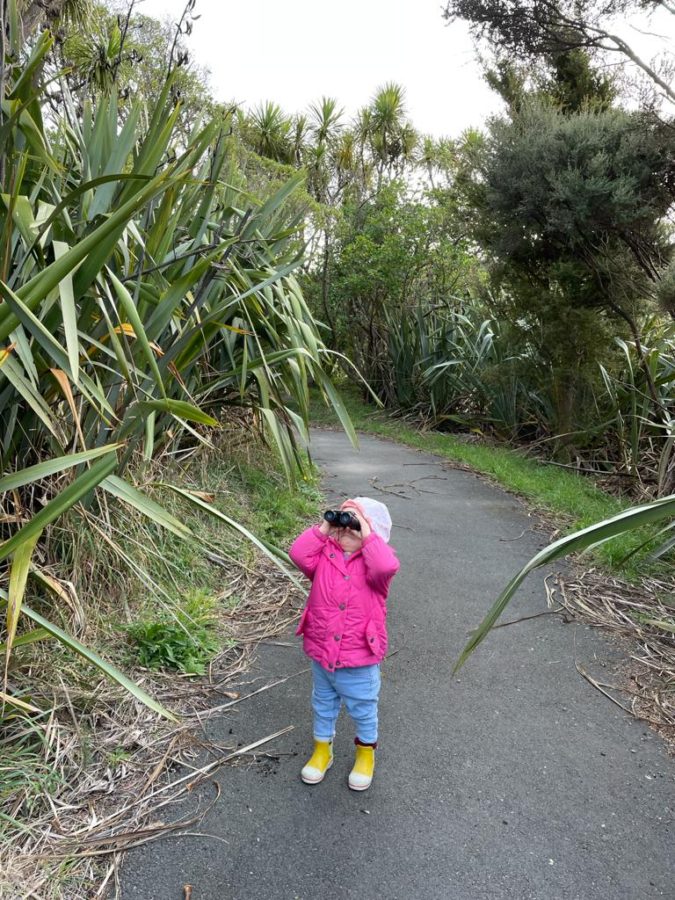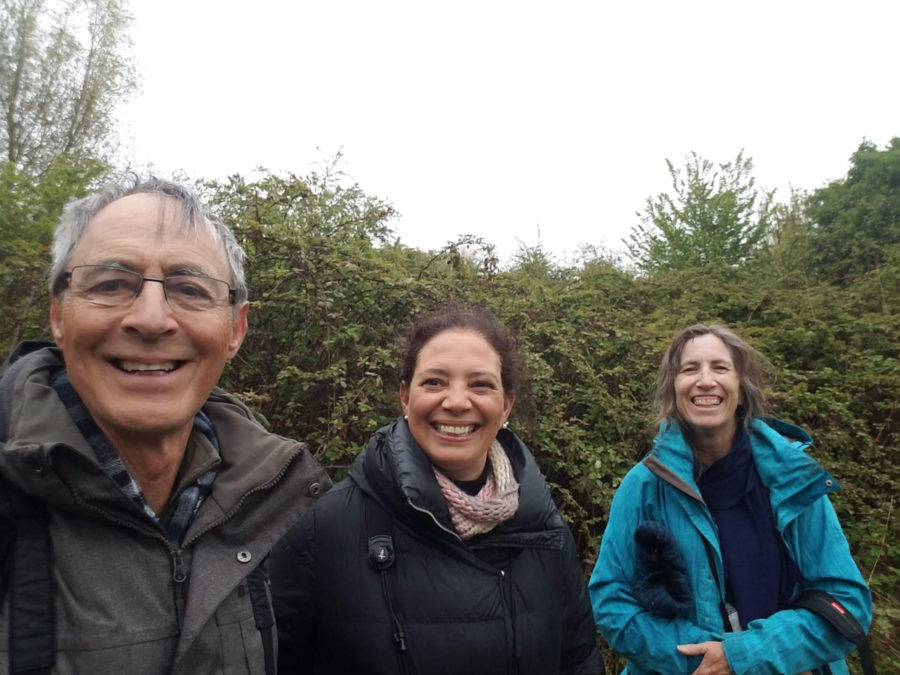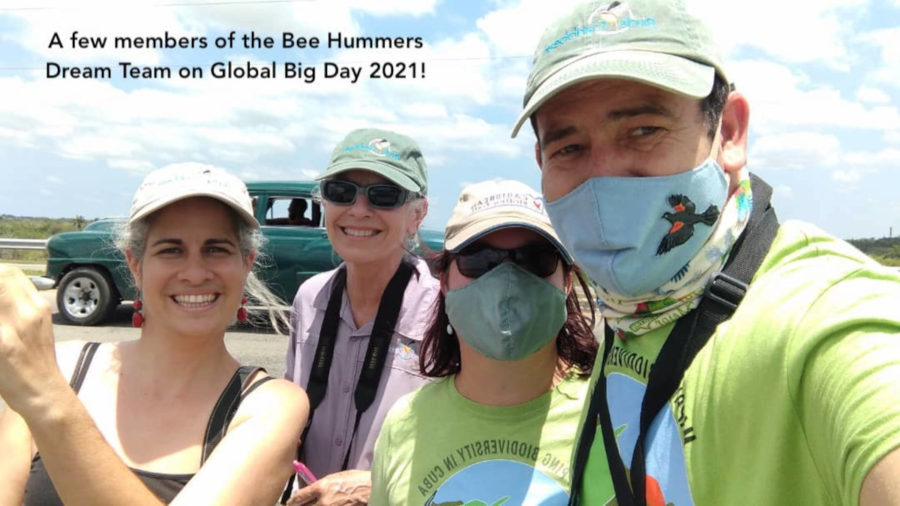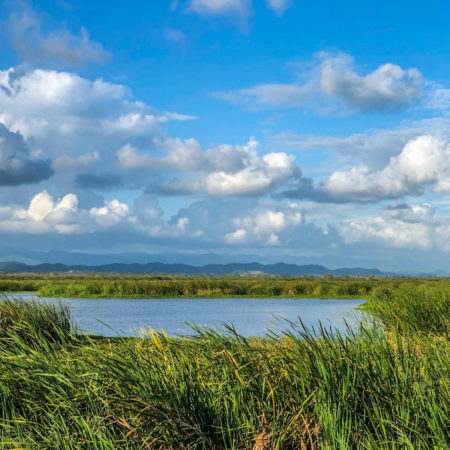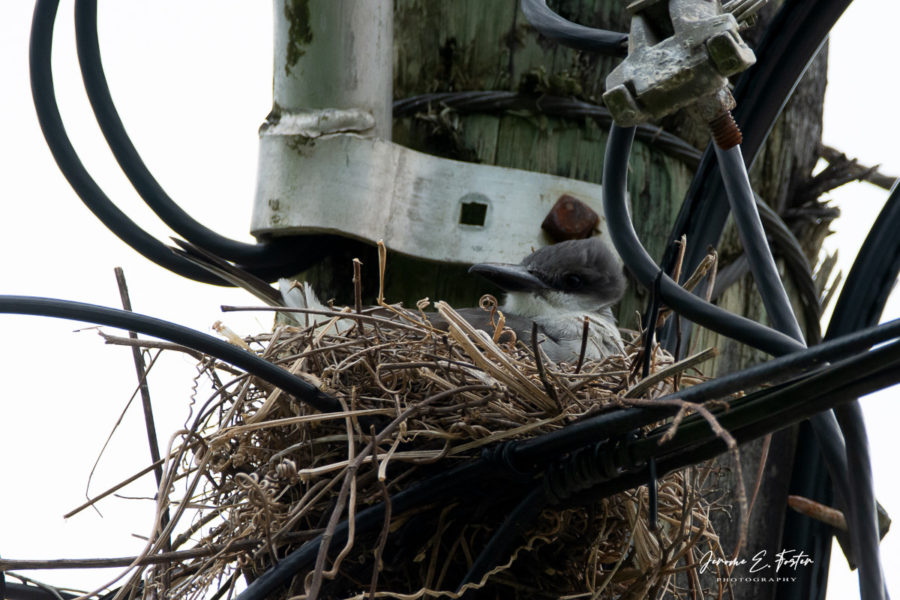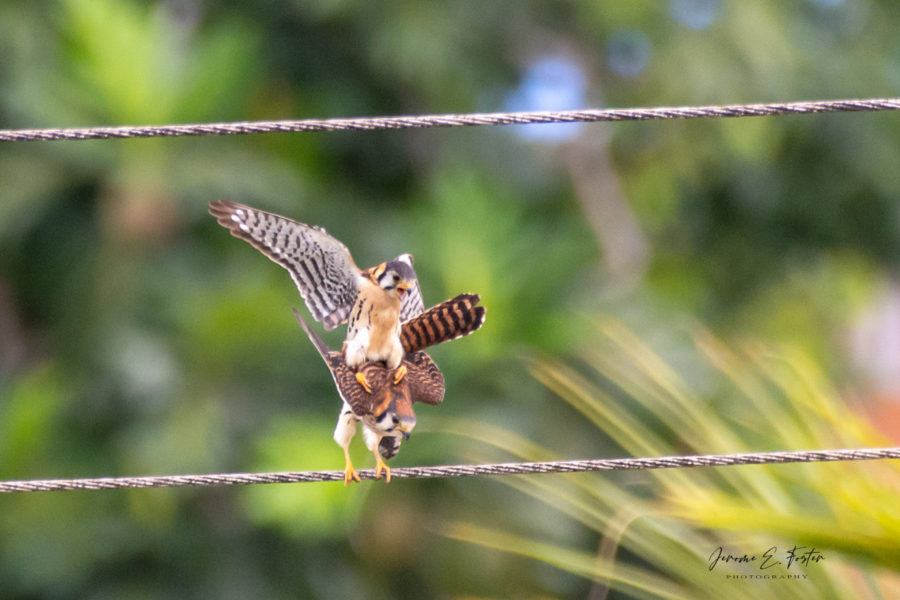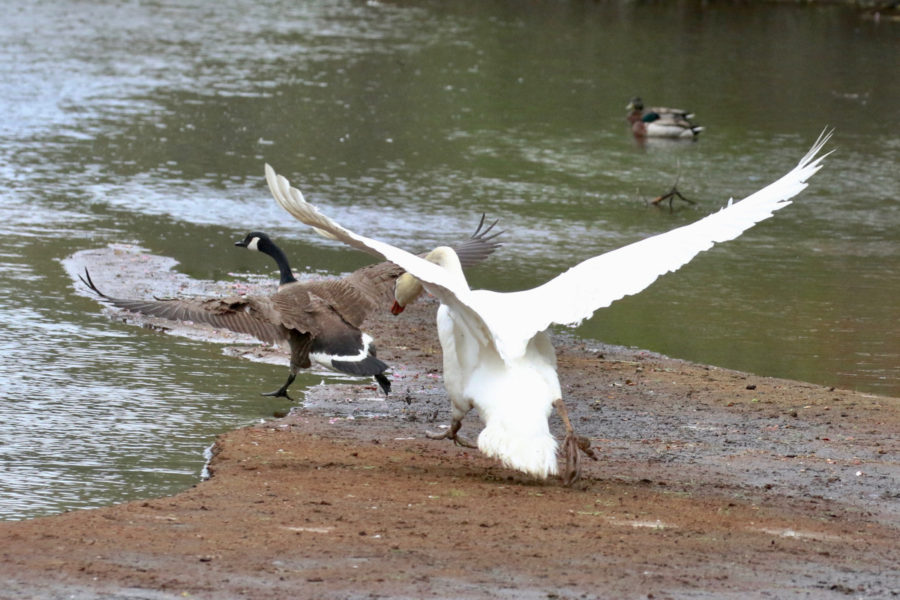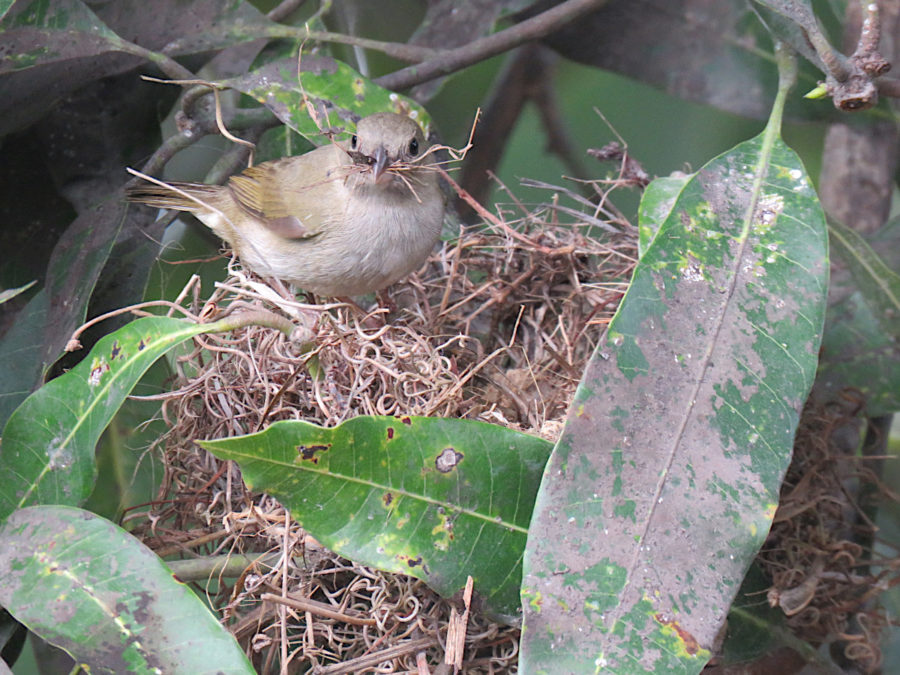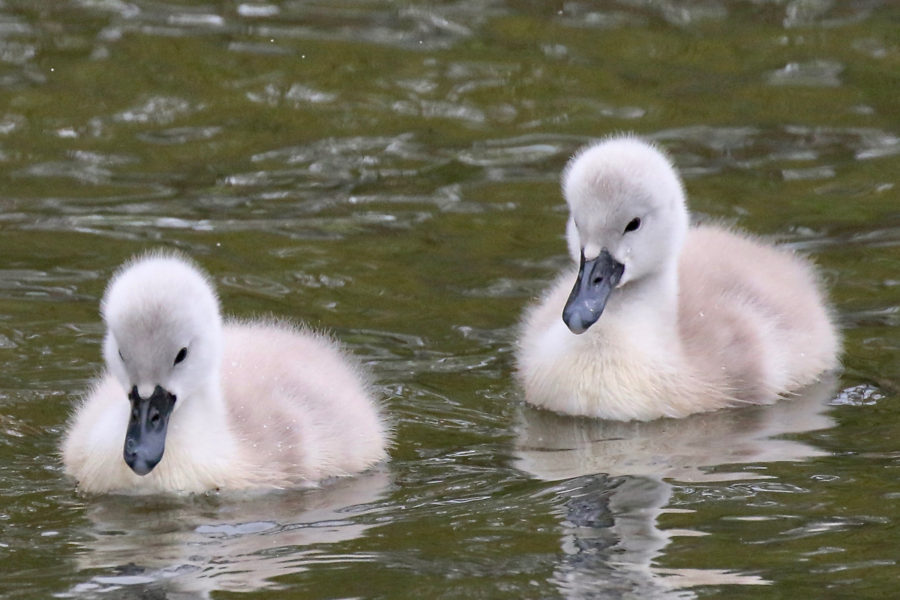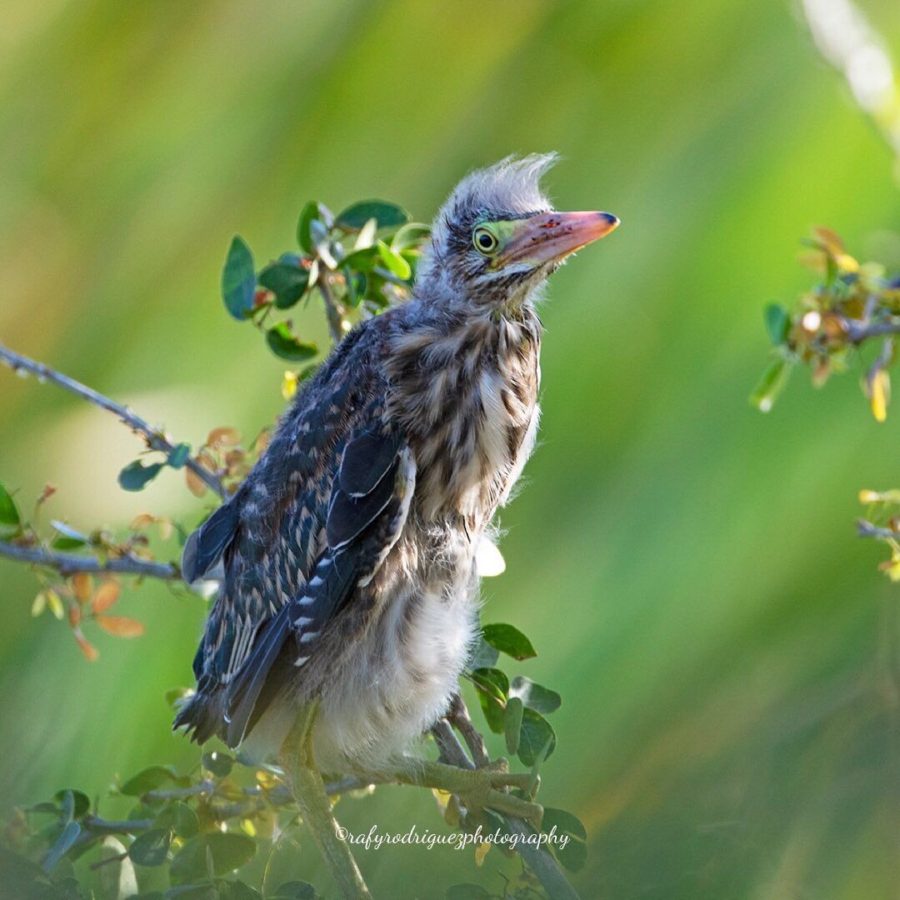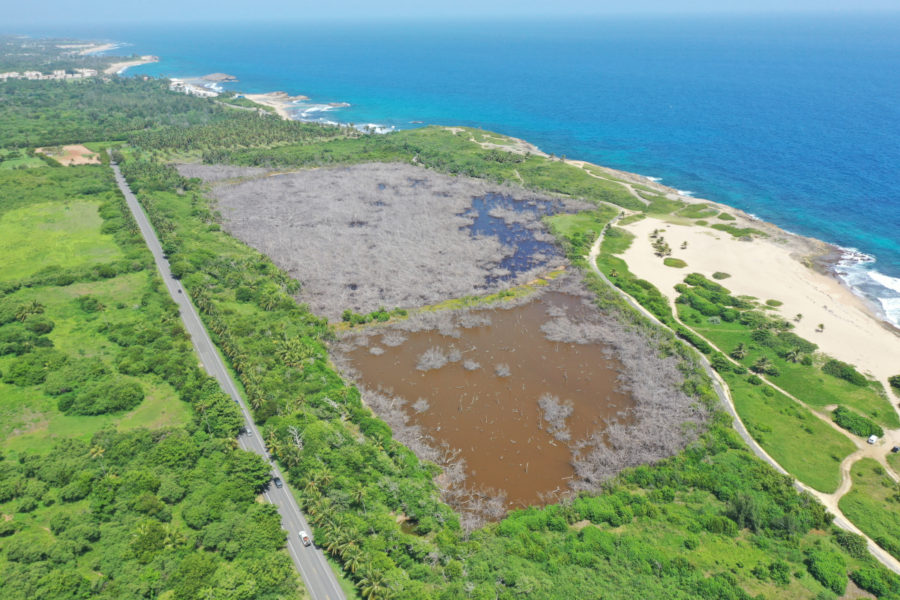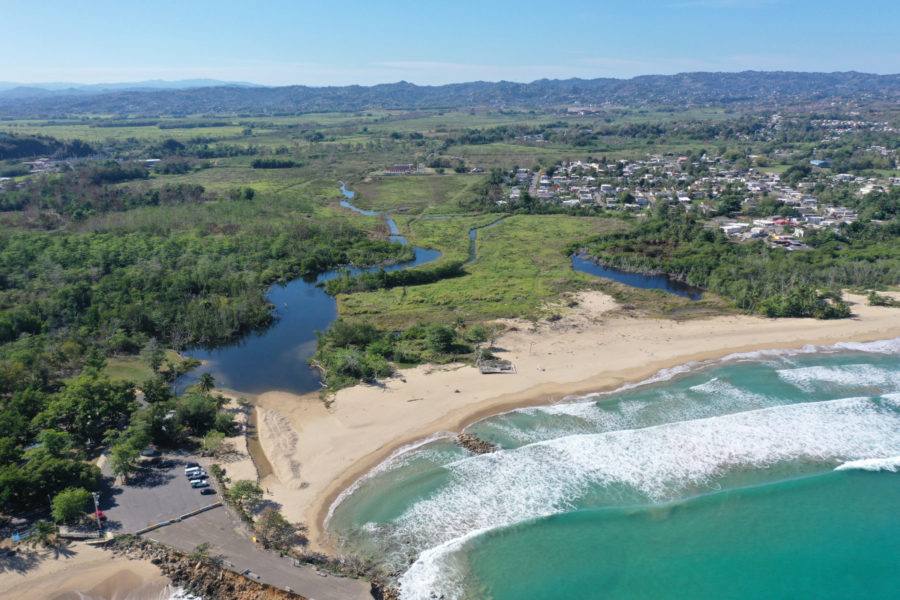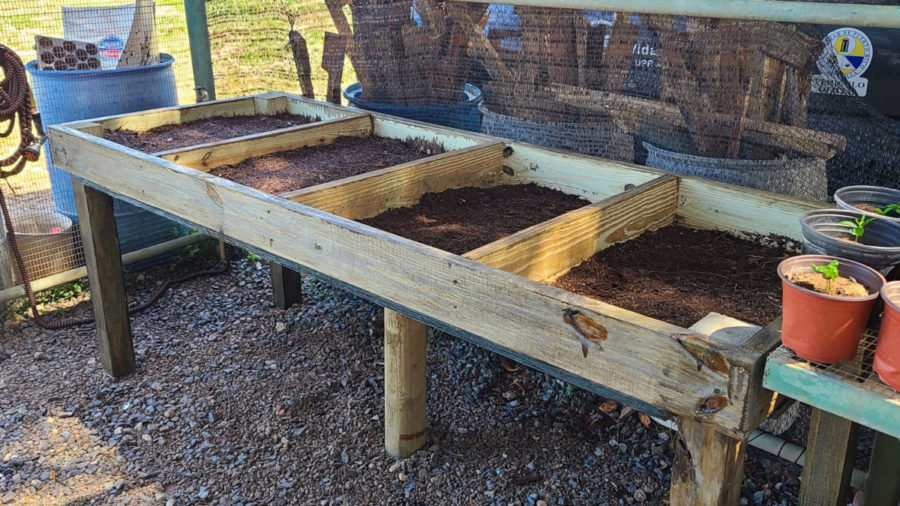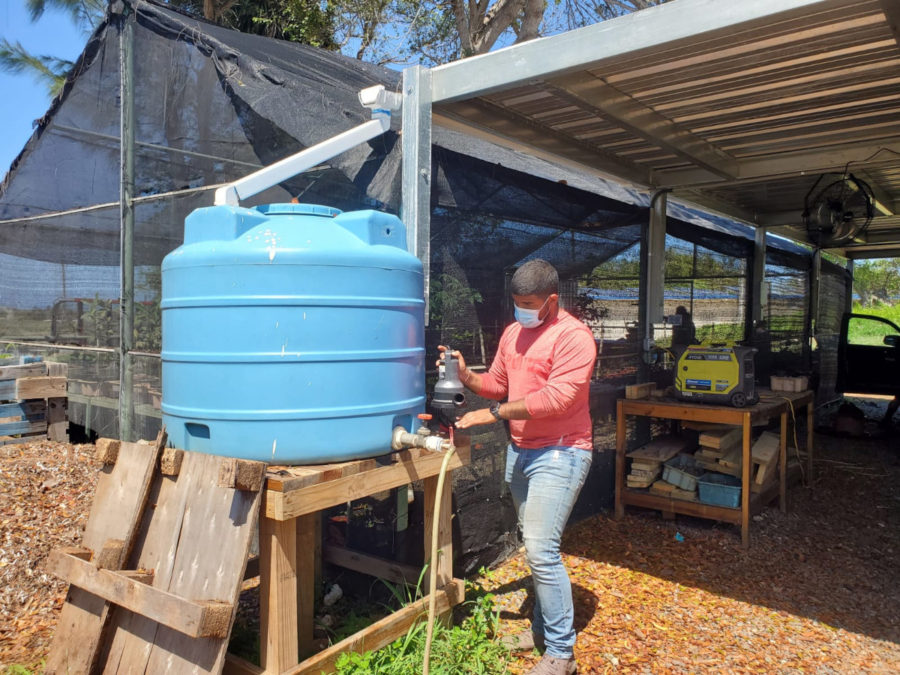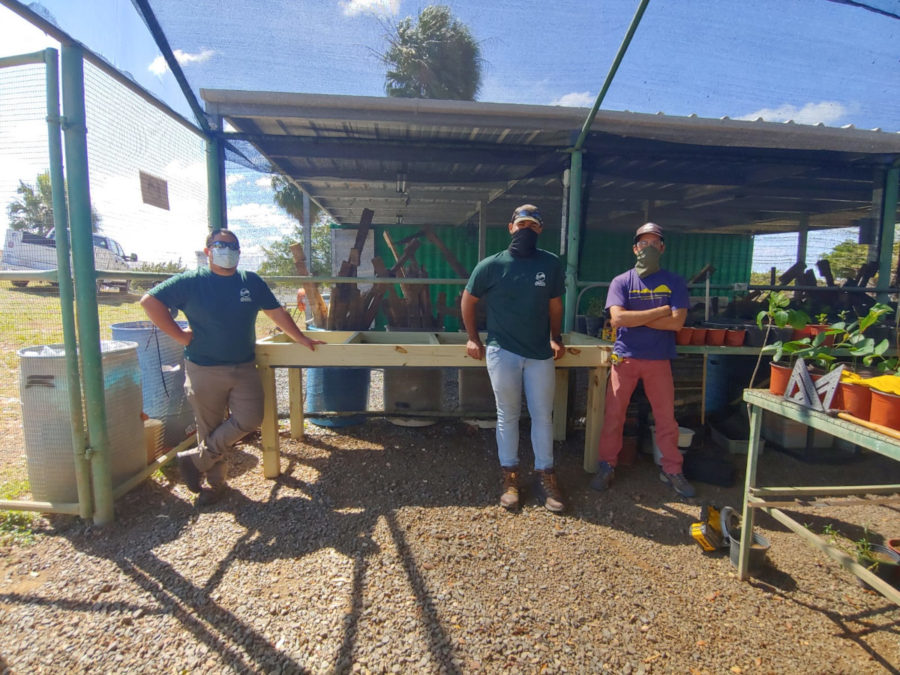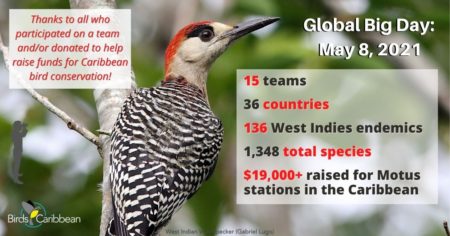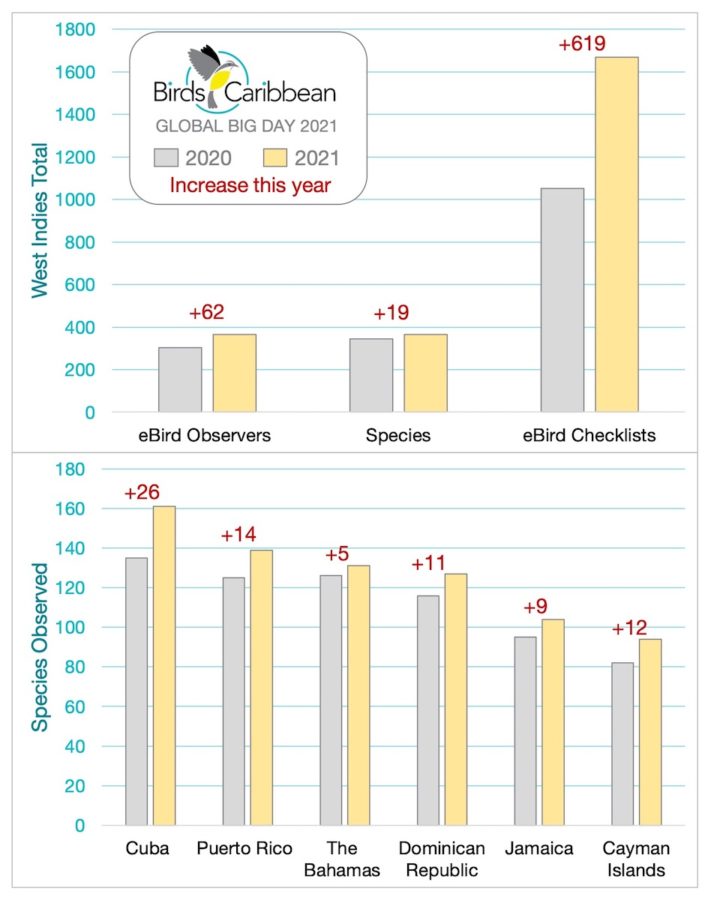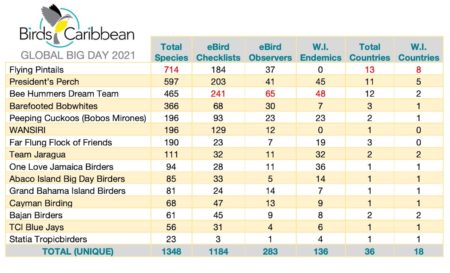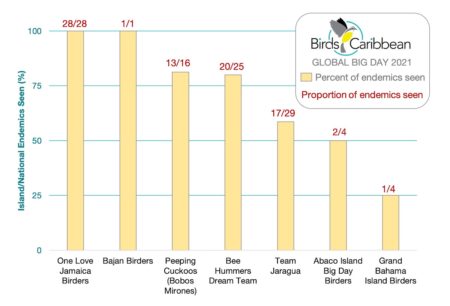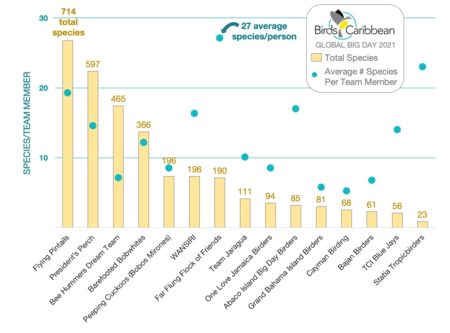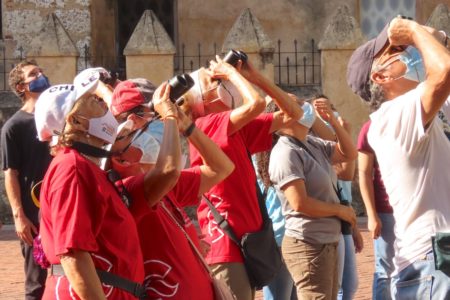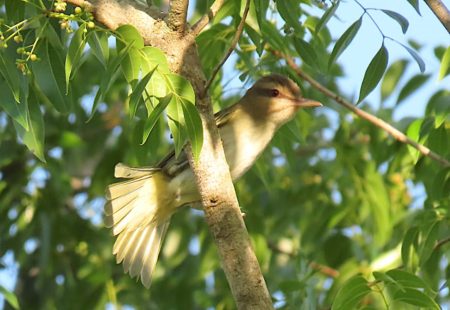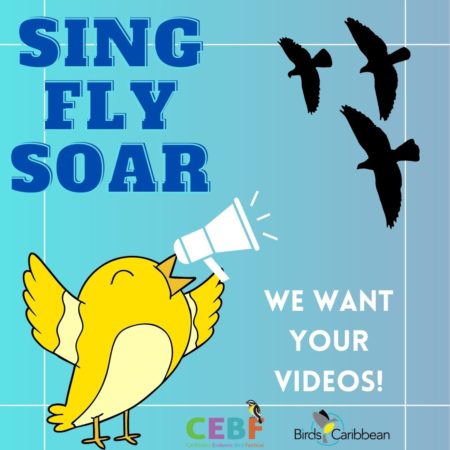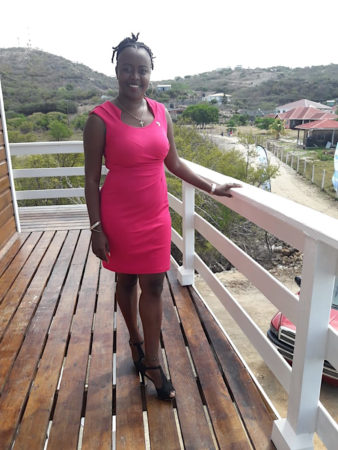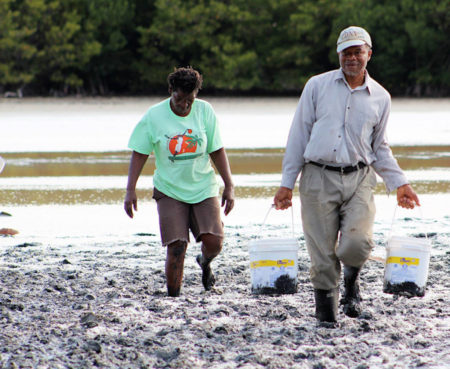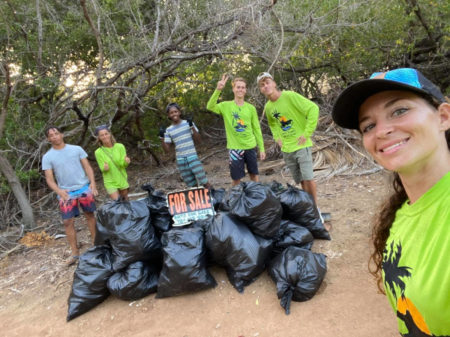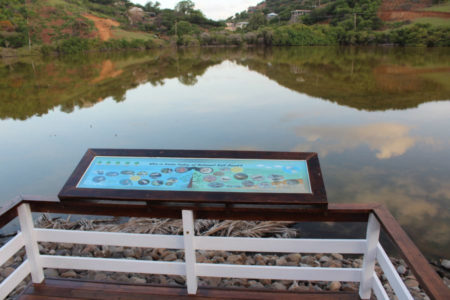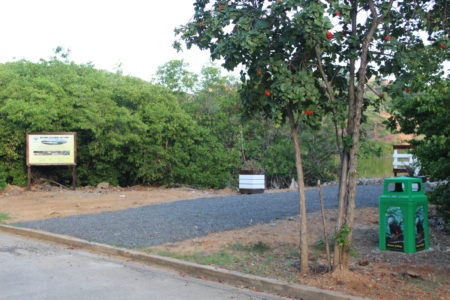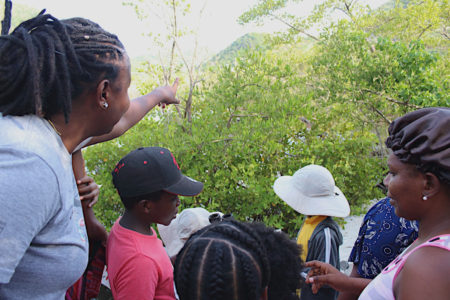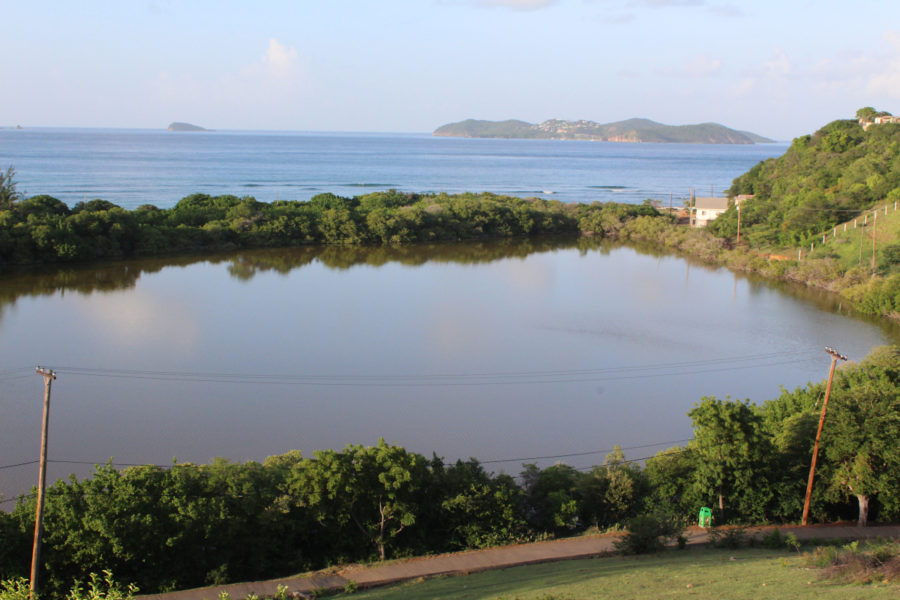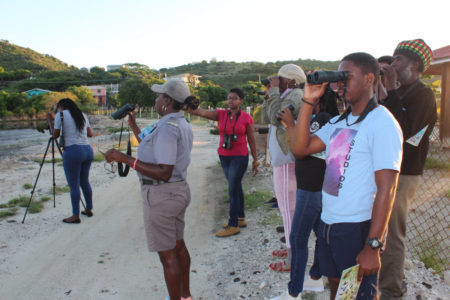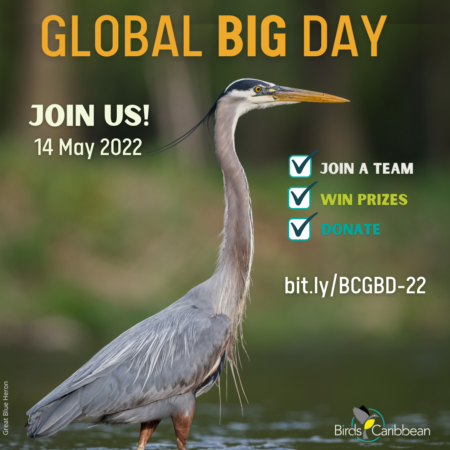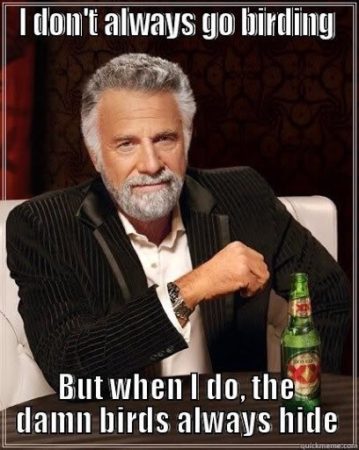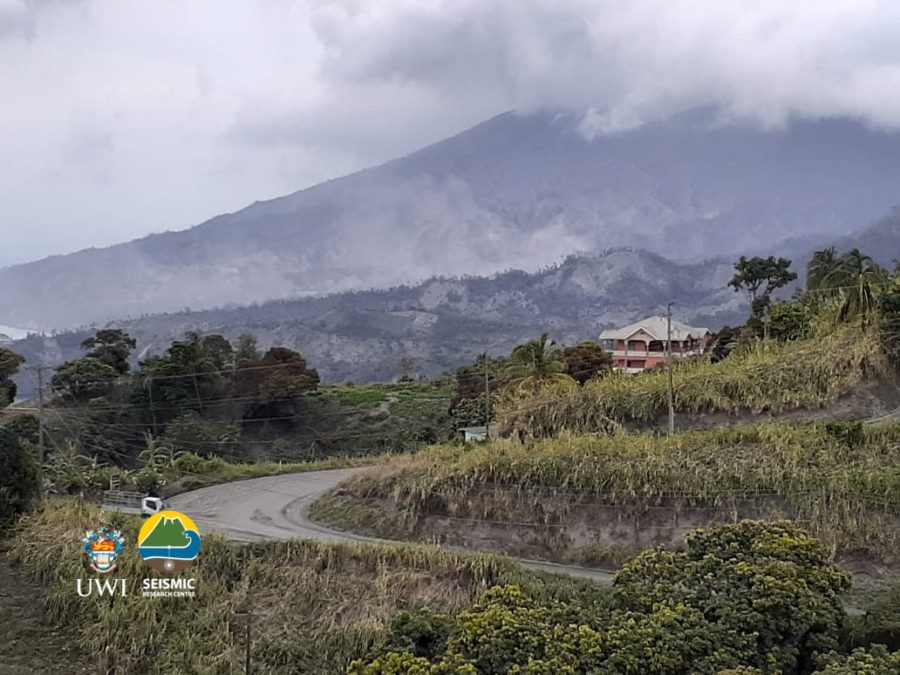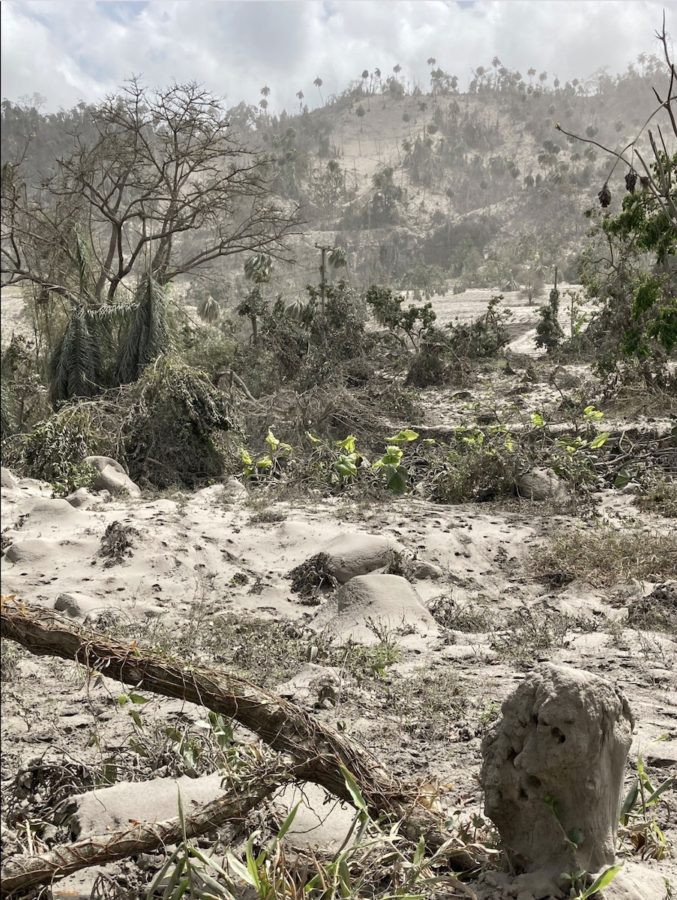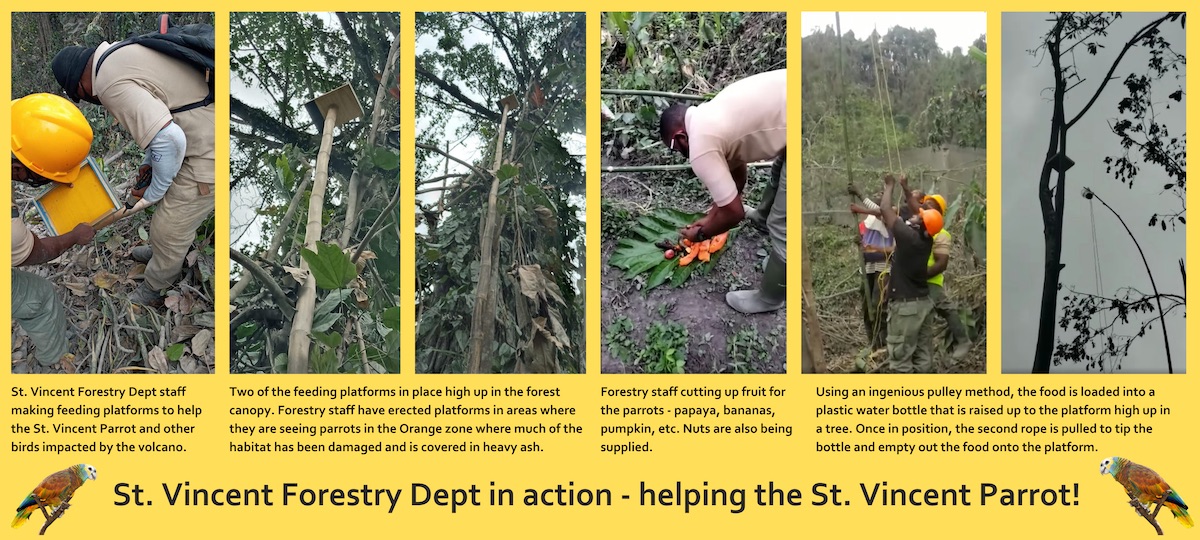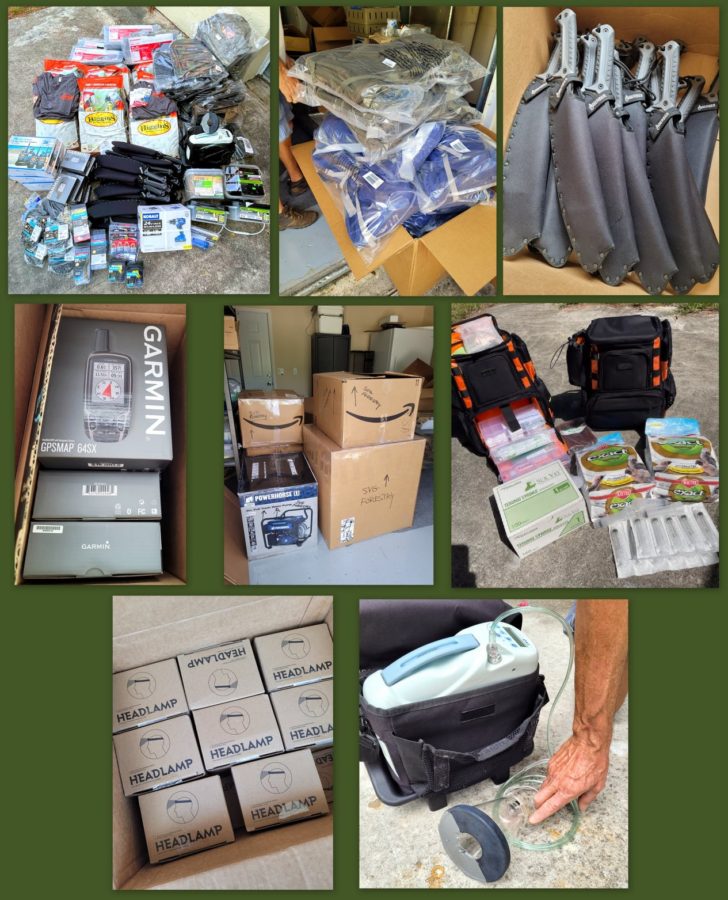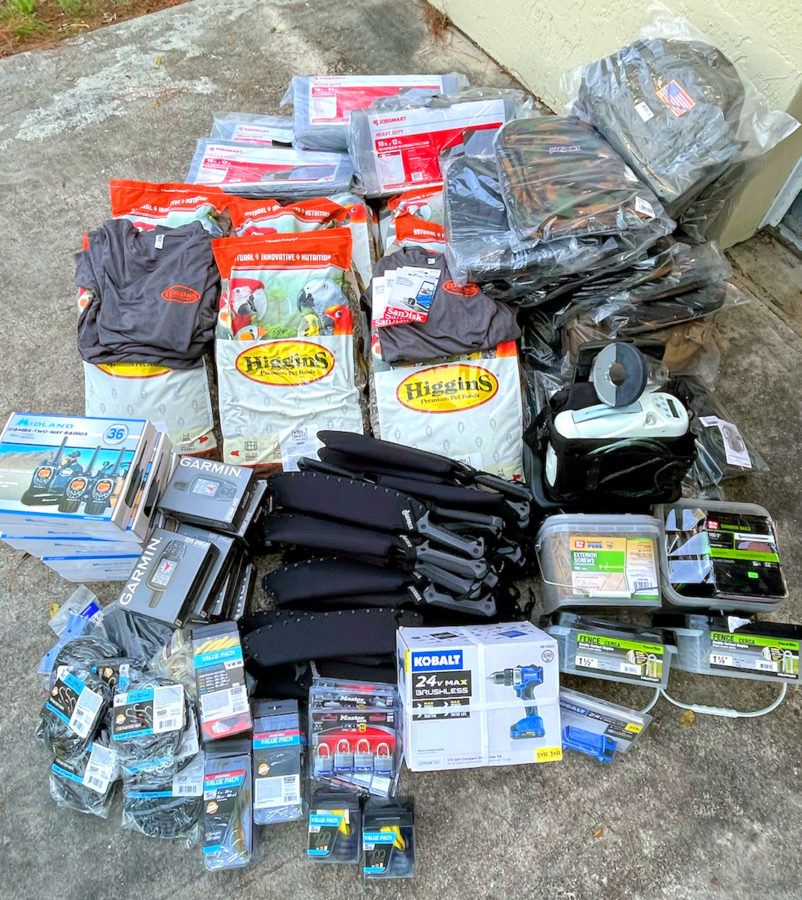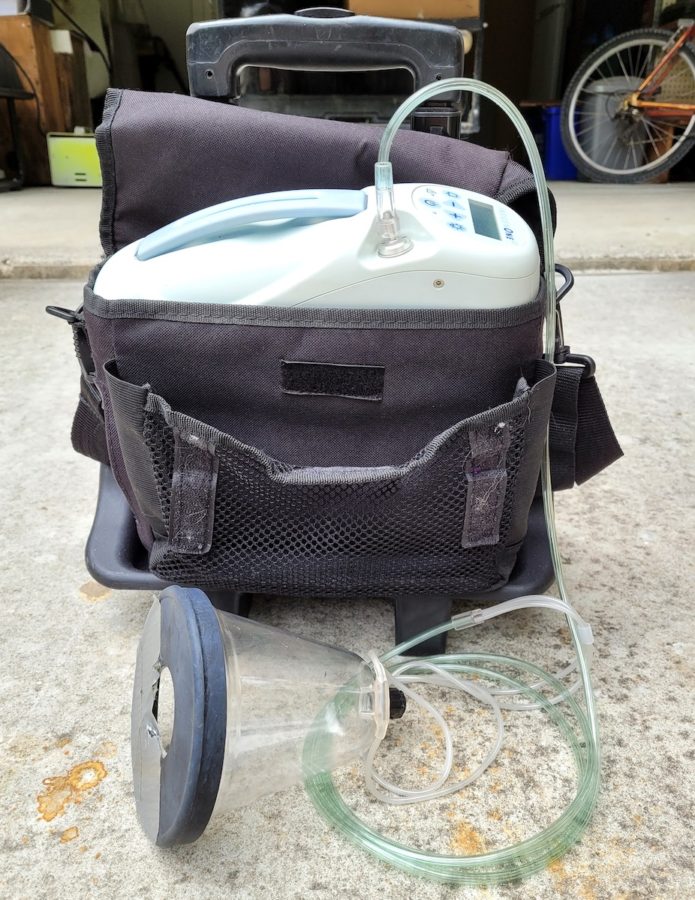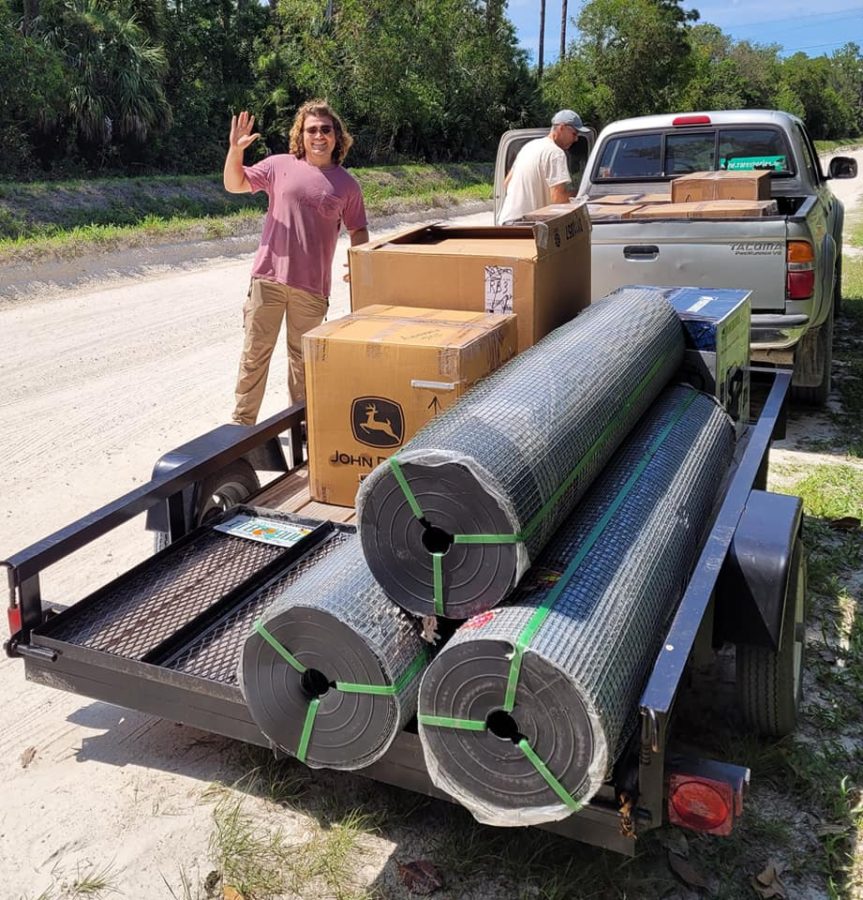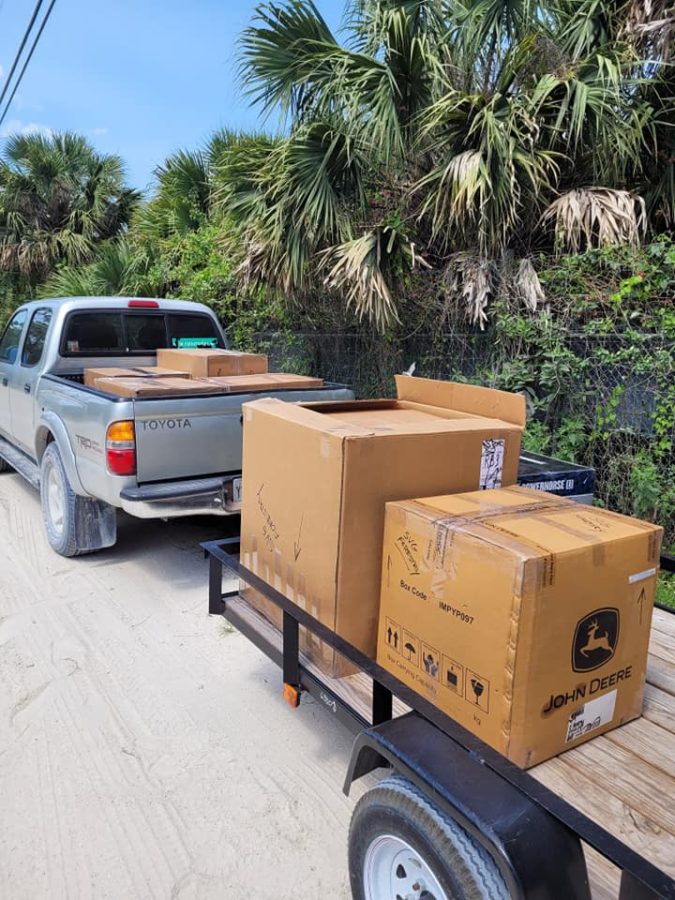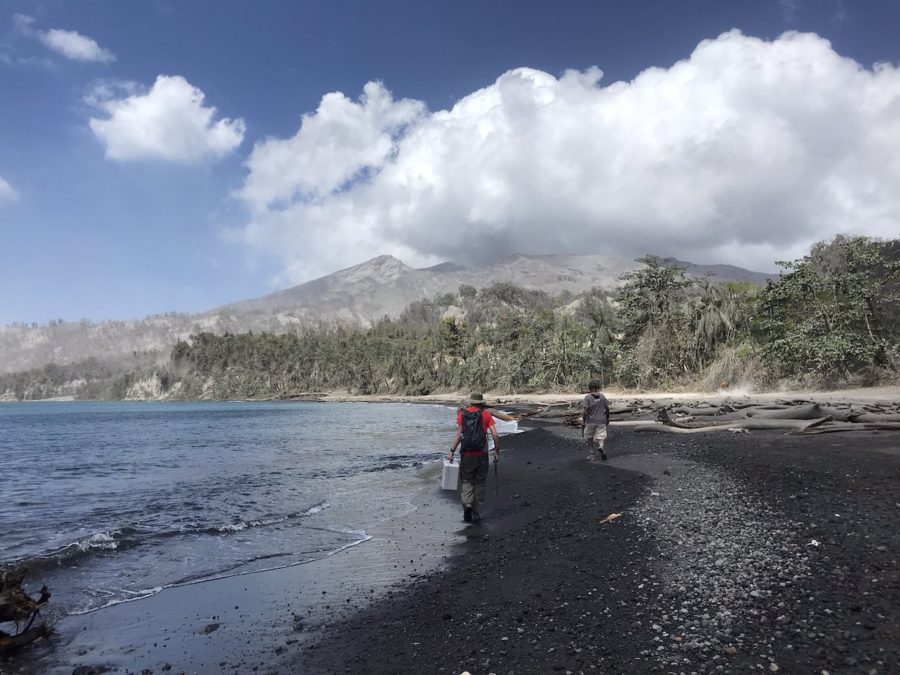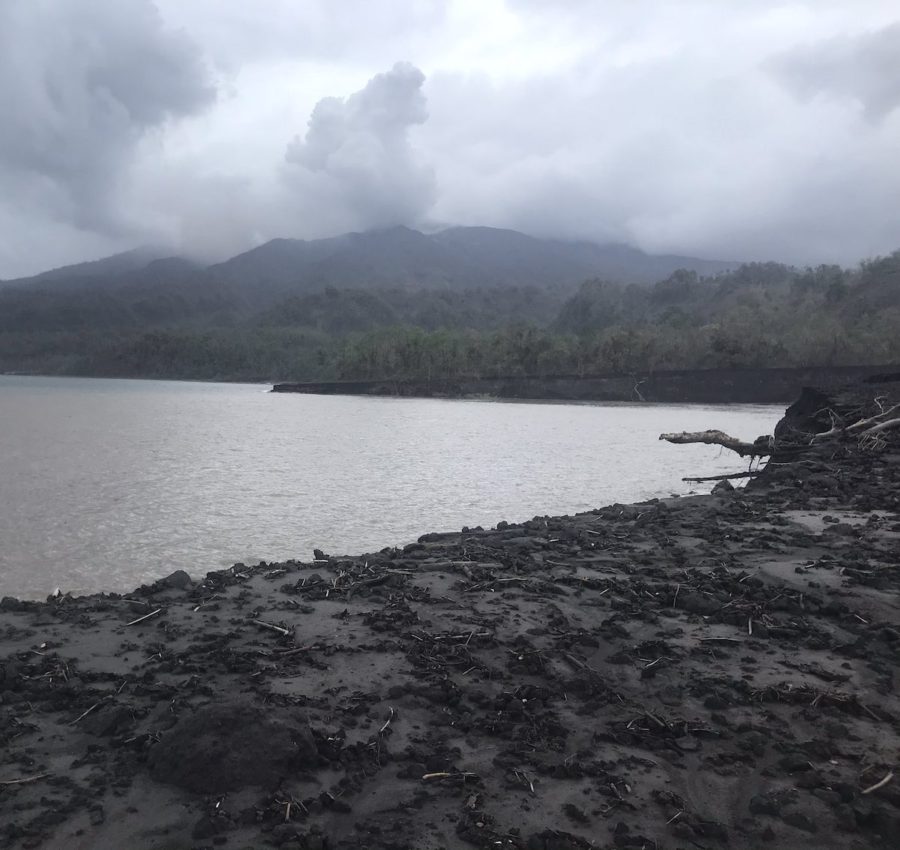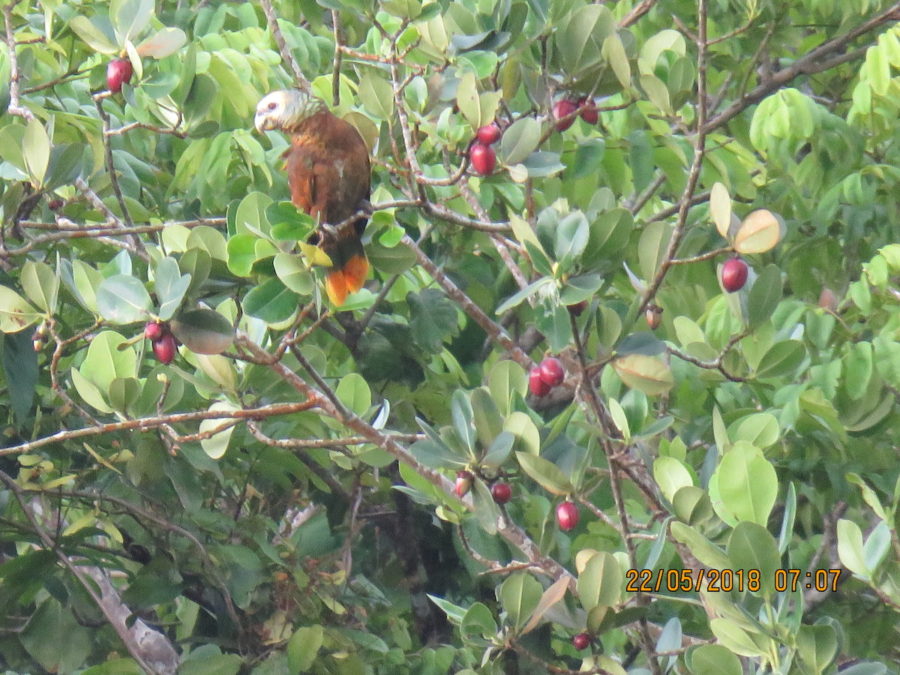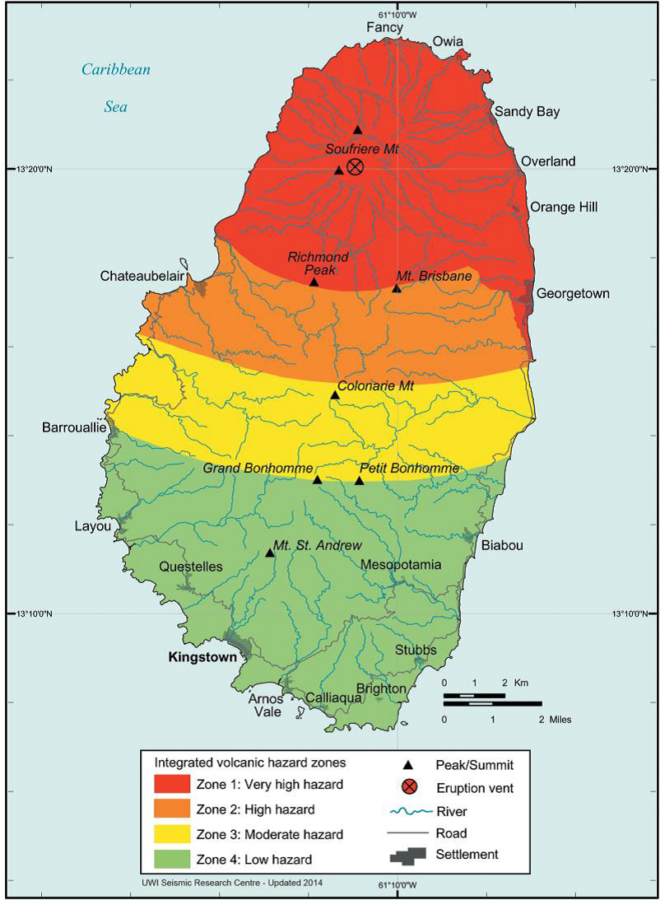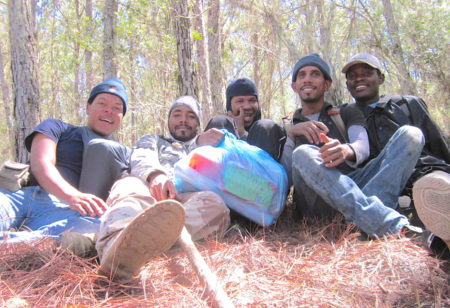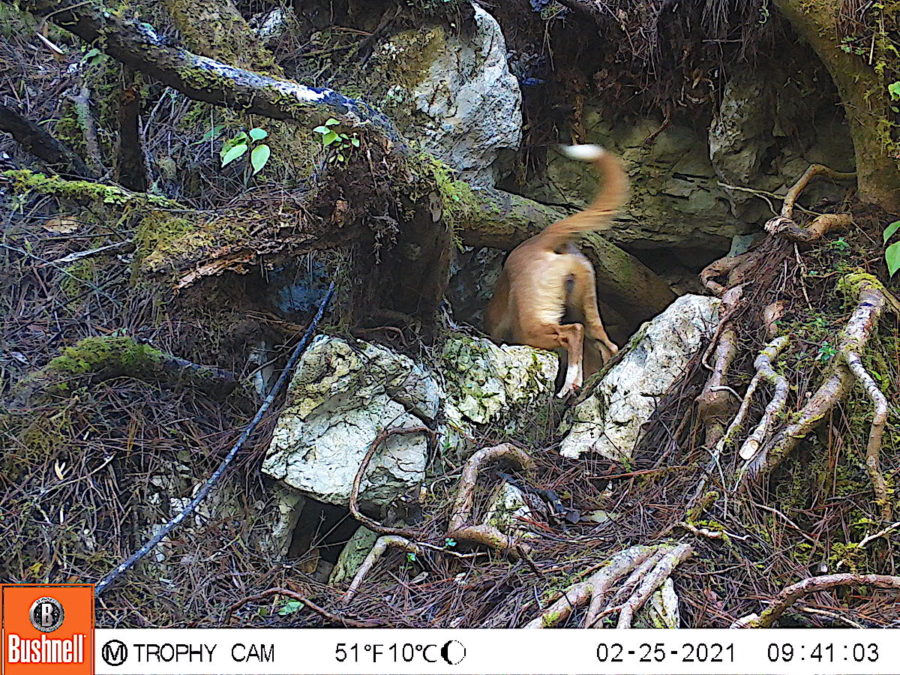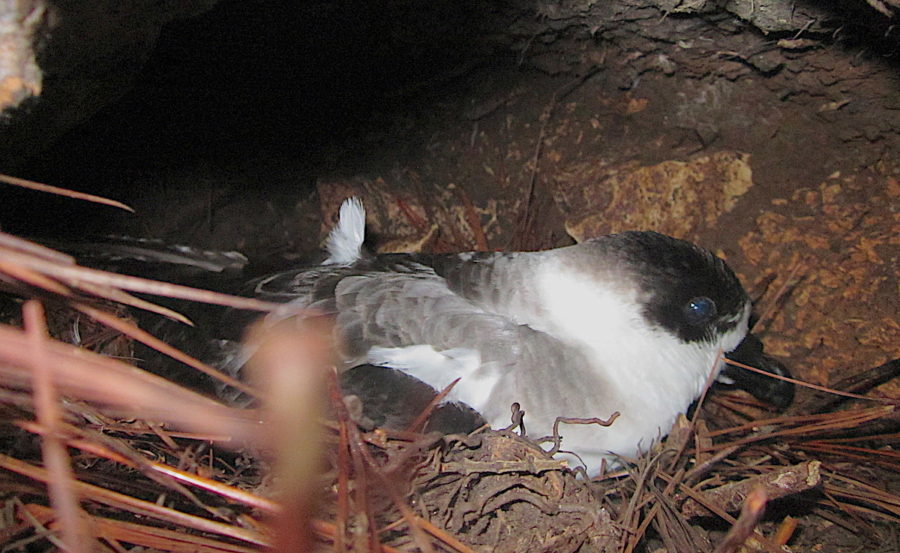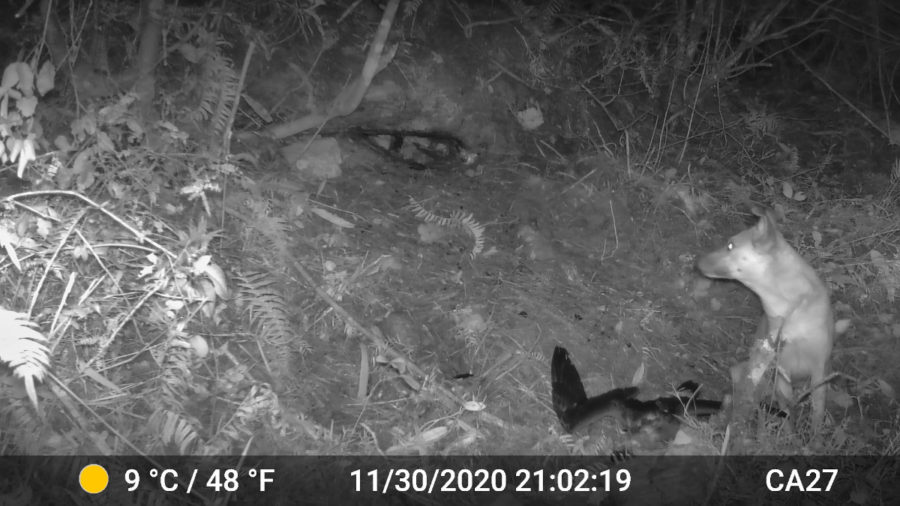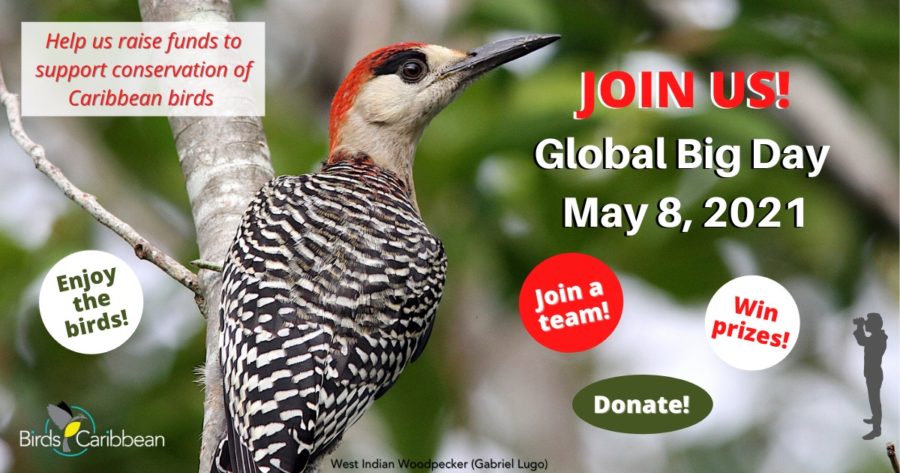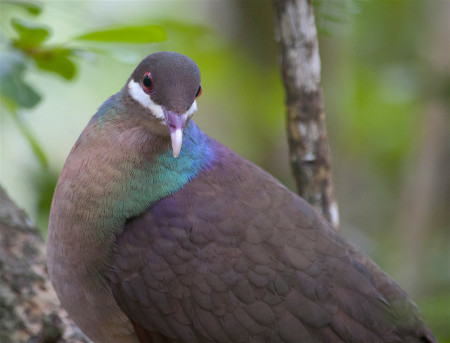
The Bridled Quail-Dove is a quiet, retiring bird. It has reason to be nervous, because it is facing a doubtful future on the Dutch-speaking island of St. Eustatius (Statia). Hannah Madden, a Terrestrial Ecologist in St. Eustatius, gives us an important update on how this special bird is faring.
Two years ago we shared the worrying news that the Bridled Quail-Dove population had suffered a significant decline on Statia. This was as a direct result of the powerful and destructive Hurricanes Irma and Maria, which followed each other closely, in September 2017. Four years on, has the situation improved?
The Bridled Quail-Dove (Geotrygon mystacea) is a ground-dwelling species that is endemic to the Caribbean. It spends its day foraging in the forest understory for fruits, seeds and the occasional gecko. Quail-Doves prefer undisturbed forests with a closed canopy. They are very sensitive to changes in their natural habitat. And those changes are happening. Unfortunately the impacts of human-induced climate change mean more intense and more frequent hurricanes, which could spell trouble for this vulnerable species.
The Quill – Before and After
I began surveying Bridled Quail-Doves in the Quill National Park in 2016. The Quill is a dormant volcano that rises to 600 meters with a large, accessible crater. It is the dove’s only home on Statia. Pre-hurricane, Quail-Doves were relatively common and observant birders could almost certainly spot one or two while hiking along the trails. The species breeds in May, when its mournful and unmistakable ‘whooooos’ can be heard echoing through the forest.
Then came Irma and Maria. In September 2017 the forest habitat of the Quill suffered extensive damage from the back-to-back hurricanes. Trees were stripped of leaves and fruits, branches were broken. Some trees did not survive. The hurricanes have left their mark – you can still see the evidence in some parts of the forest.
Hover over each image to see the caption; click on each photo to see it larger and to view images as a gallery
Then there are the goats!
In addition, we have a very serious goat problem in the park—one that has been pervasive for decades. These are non-native, free-ranging goats that graze excessively in areas that are already damaged. This results in a limited food supply and reduced understory cover for the Bridled Quail-Dove (as well as other species that depend on the forest). There is nowhere for the birds to find food and shelter. Feral chickens disturb ground cover and compete for the same food source. Invasive black rats and feral cats, both of which are present in the Quill prey on nests and take eggs and chicks. The Bridled Quail-Dove’s survival rate – and its chances of bringing up a family – are slim. There is no evidence that adult birds have come in from nearby islands. The Bridled Quail-Doves of Statia are physically and genetically isolated. We became concerned for the welfare of the Bridled Quail-Dove. We were grateful for the funds from many generous donors, including BirdsCaribbean, allowing us to conduct our surveys.
In search of the Quail-Dove
I conducted surveys of the Bridled Quail-Dove in the Quill National Park, walking previously established transects (walking routes) within the dove’s range (~150 to 600 m). We surveyed during peak breeding season (May), so that we could hear as well as see the birds. Once I saw or heard a Quail-Dove, I measured the distance to the bird. I also recorded how high up they were, and the height of the forest canopy. Once surveys were complete, I pooled all data from 2016 – 2021 to obtain abundance and density estimates per year.
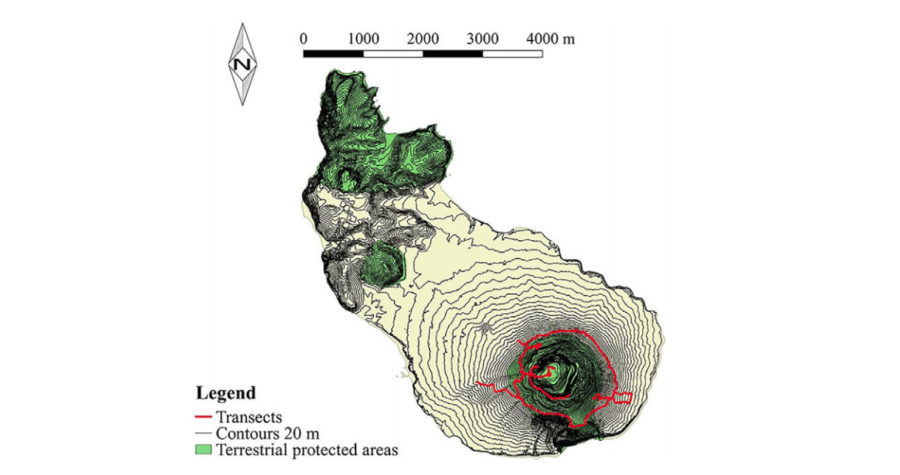
Greater effort, disappointing results
As shown in the graph below, we increased the extent of our survey from 1,200 m of transects in 2016 to over 15,000 m in 2021. Our coverage increased 13-fold, and yet we were able to find only around one third of the number of doves that were counted in 2016, before the hurricanes. It was challenging work. As you can imagine, repeating so many surveys is physically demanding.
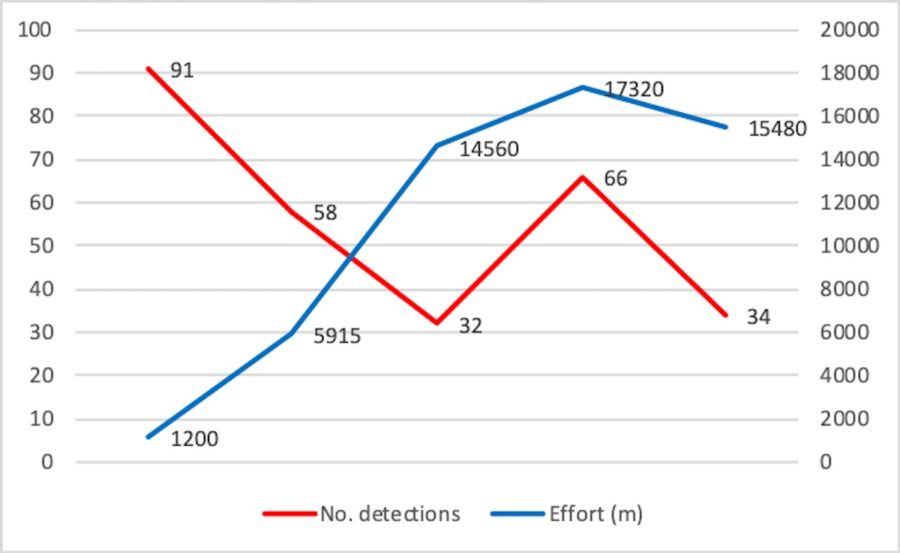
Unfortunately, estimates of the numbers of Bridled Quail-Dove on St. Eustatius have declined significantly since 2016. The current estimate is just 123 individuals (somewhere between a minimum of 72 and a maximum of 210). This is less than half of the 2019 estimate, and less than 5% of the 2016 estimate. So, numbers have continued to dwindle since the hurricanes.
After assessing the influence of covariates (factors that might influence the presence or absence of the dove, like weather, time of day, elevation, condition of the vegetation, etc.) on Bridled Quail-Dove presence, I found that doves were more likely to be found at higher elevations in habitats with a higher canopy (such as inside the crater, along the rim, and on the upper outer slopes of the Quill). It became clear also that in the years following hurricanes Irma and Maria, doves were less and less likely to be present in the survey area.
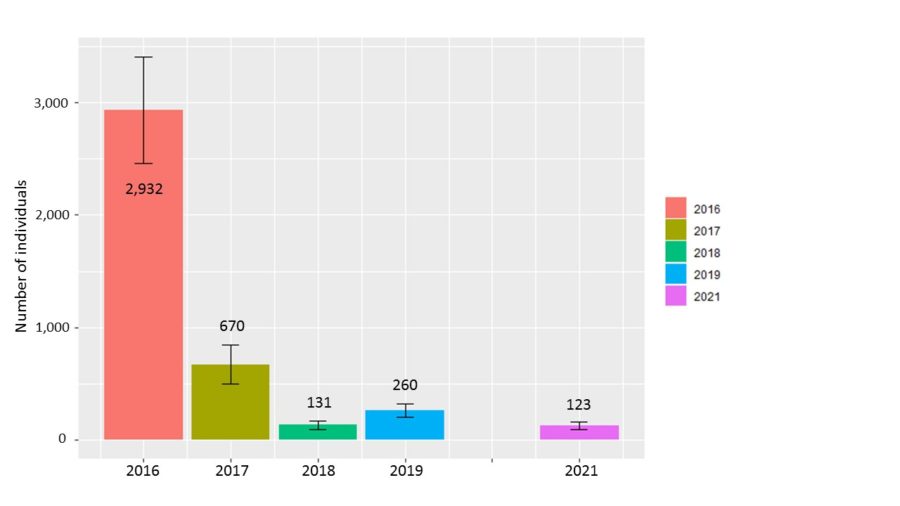
Urgent action is needed to save the Bridled Quail-Dove on Statia!
We are extremely worried about the Bridled Quail-Dove on St. Eustatius. This lovely bird’s ongoing decline is caused by a combination of two factors: the destruction of the places it calls home, and the invasive species that prey on it. Its long-term survival is now uncertain unless urgent action is taken to save it. Even if the dove does keep going, such a small and isolated population faces additional risks, such as inbreeding.
Climate change is here to stay, and this means that hurricanes are likely to become more frequent and more powerful. This could be catastrophic for the Statia population, and others in the region. Recently the International Union for the Conservation of Nature (IUCN) proposed that the conservation status of the Bridled Quail-Dove be reassessed, based on our work on Statia. This means the classification could be changed from Least Concern to Near Threatened or Vulnerable. However, apart from Statia, data are still lacking from many islands. We encourage enthusiastic birders to conduct their own surveys so that local populations can be evaluated.
An Action Plan for a precious bird
We will be working with local conservation NGO St. Eustatius National Parks (STENAPA) to create an Action Plan for the Bridled Quail-Dove. To effectively protect the species locally, it is likely that we will have to take action on several fronts, Goats, cats and feral chickens will need to be removed from the park and rodent will need to be controlled. For this, we will need the support of the local government and the community.
Monitoring Bridled Quail-Doves on Statia is a tremendous effort. To make life easier, we are suggesting trying out passive acoustic monitoring (PAM) devices during the breeding season. How does this work? Recording units can be placed in the field for up to a month to record and interpret calls. Using these devices will allow us to collect data in less accessible areas, helping us to broaden our study.
The work will continue as we seek to find help for this iconic bird. Hopefully, by combining conservation efforts with field surveys and PAM, we will have better news in the coming years.
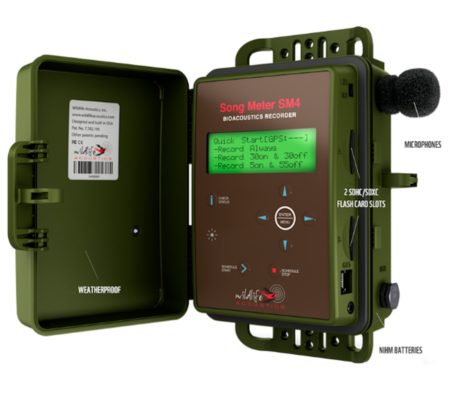
Thank you to BirdsCaribbean and all the generous donors who supported BirdsCaribbean’s Hurricane Relief Fund – my survey work on the Bridled Quail-Dove would not have been possible without your support!
Hannah Madden works with the Caribbean Netherlands Science Institute, based on St. Eustatius. She is also a member of the IUCN Pigeon and Dove Specialist Group. She also works as a bird and nature guide in her spare time, sharing the beauty and diversity of Statia with visitors. Hannah is an active member of BirdsCaribbean and has participated in several training workshops and conferences. She has published papers on different taxonomic groups, but especially enjoys working on birds.
